Table of Contents
Introduction
When it comes to eating fantastic Taiwanese food I tend to search for “authentic” whenever I can. That means, in the best case, first generation owners who make food the way they eat it back home with the customer base being mostly natives too. When a strange American like me comes waltzing in their heads turn because I found their secret spot. That’s my fantasy anyway.
When I search on Google Maps and see comments in Traditional Mandarin characters that say “this tastes exactly like what I eat back home” I know I’ve found gold. Taiwanese bloggers and friends have also given me valuable tips! For my list today I’ve included mostly traditional Taiwanese eateries with one exception taking the #5 spot.
It’s a “Taiwan maze soba” restaurant. This dish, while different from Japanese-style ramen, is merely “inspired” by Taiwanese but nonetheless a Japanese creation. (It’s actually said to originate from Nagoya -it gets complicated.) This place always has a line out the door so I wanted to drop in and check it out:
#5 Ajisen – A Nagoya “Meibutsu” comes to Osaka
While not offering an officially authentic Taiwanese ramen, this historical restaurant which started in Nagoya in the Showa era helped fuel the spicy Taiwan Maze Soba craze that continues today. How hot is it? A friend of mine who visited previously said it practically burned her mouth off. As someone who has delicate bowels I wasn’t sure I’d be able to handle it. But shouldn’t I suffer for my art? Sacrifice myself for the sake of writing a wonderful article? Read on and see what I did.
Recently arriving in Osaka in 2019 in the Dai 2 Biru (which is another fascinating spot) This ramen joint was intriguing. But it wasn’t just the noodle soup they offered, but many other Japanese-style Chinese regional dishes which you might find at other “machi chukka” style spots. But the flavoring and spices were different enough to make it stand out -as (possibly) being Taiwan-inspired.
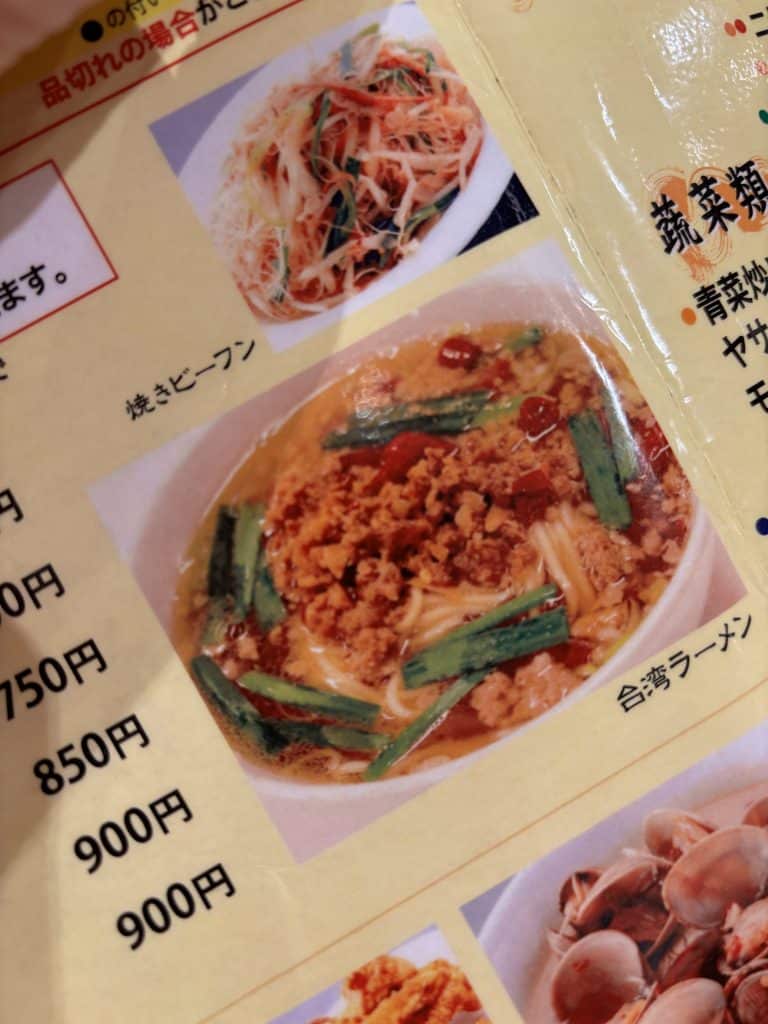
As you can see on the menu the “Taiwan Ramen” looks something like this ↑ – as the featured dish of the restaurant. It has ground meat, garlic chives and hot peppers. On the menu they also just offer “ramen.” When I asked what the difference was they said “just the spices” so i ordered that (on account of my bowels.) But what came out appeared to be a standard Japanese ramen ↓ so I was a little disappointed.
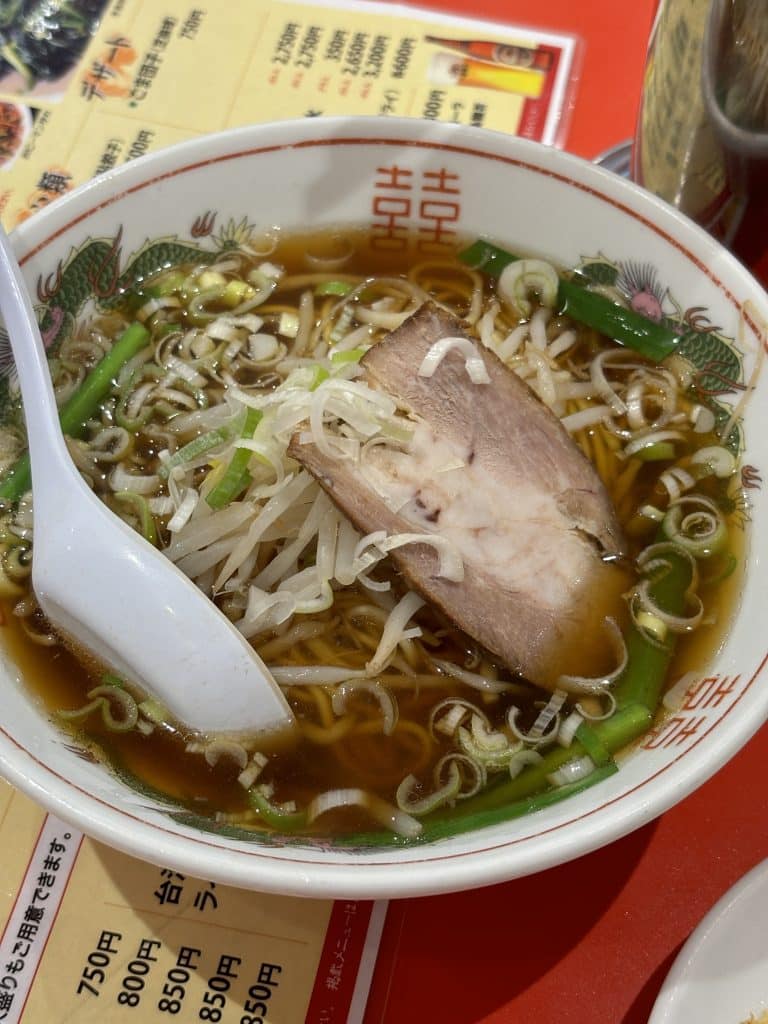
However, besides the chashu pork and lack of hot peppers, the rest of the ramen appeared to be the same so I could judge based on that. The soup was different than Japanese (which can have a soy sauce base) and the addition of the garlic chives was interesting. The noodles were also thinner. It was a solid ramen although I would have liked to try a non-spicy version with the ground meat -but it was too late.
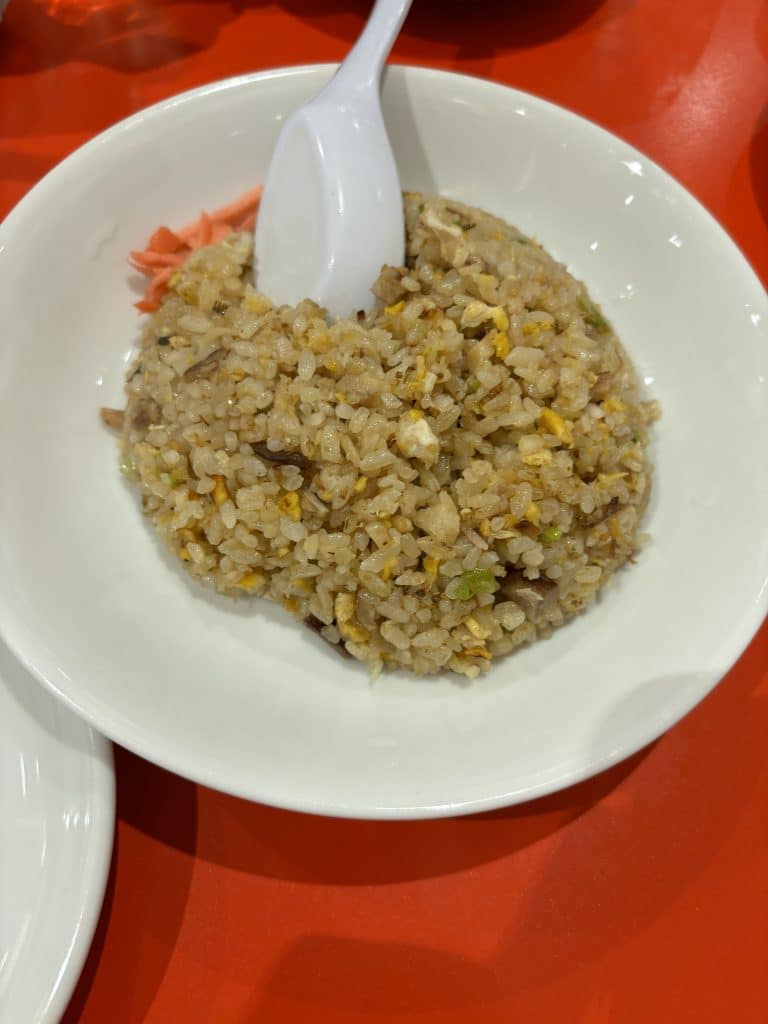
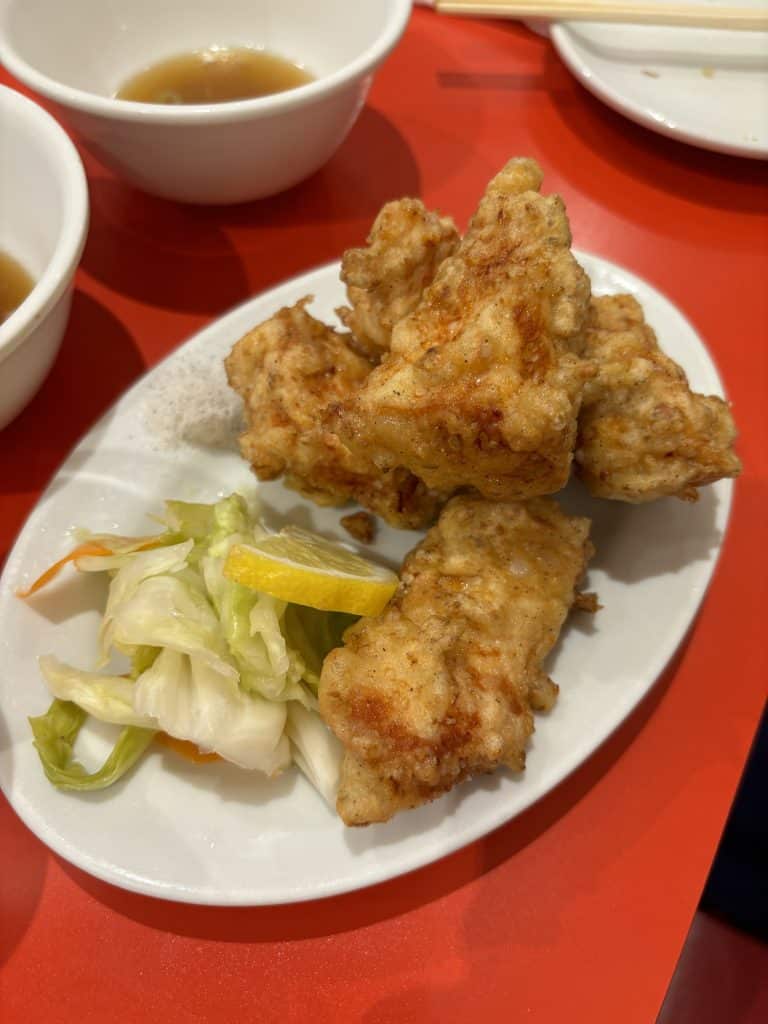
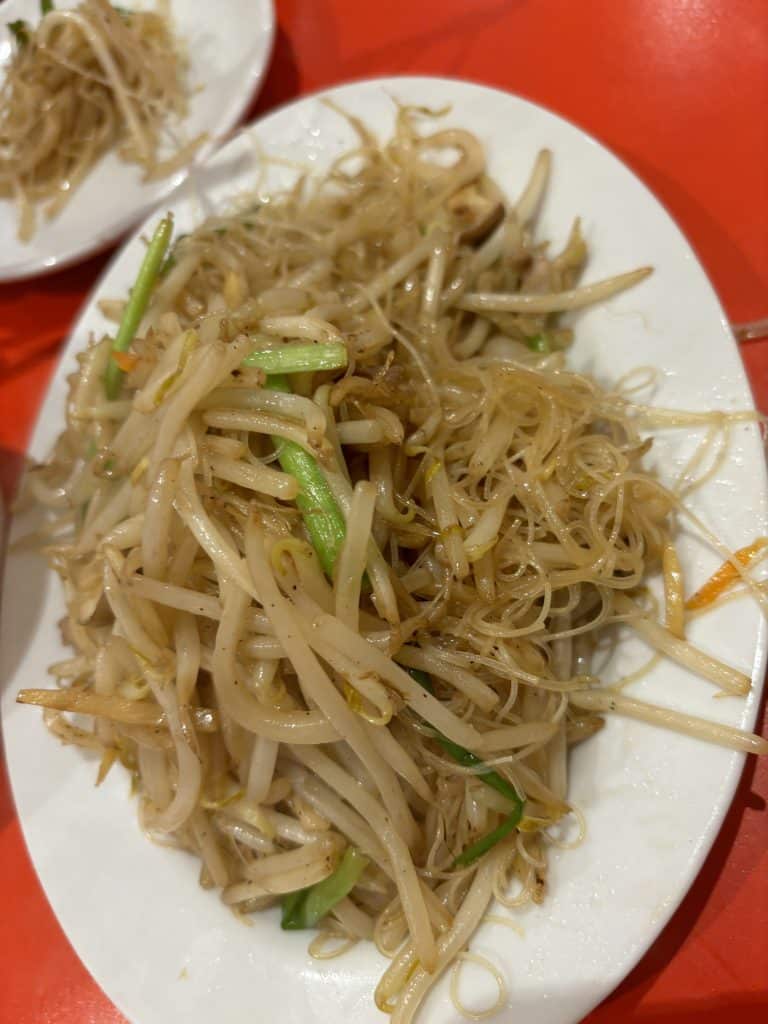
A few more dishes I tried include the fried rice, fried chicken, and bifun (which is a noodle dish.) In terms of what made these stand out from the usual regional-style restaurants was the strong garlic flavor (sometimes including big chunks of it!) I’m not used to a karaage fried chicken with that kind of punch in the batter coating -but I loved it! The meat was tender and fresh too -perhaps a “wakadori” (young chicken) as they say (poor baby chicken.) The bifun tasted great and included a lot of bean sprouts which as you can see, I was a little low on veggies, so that was helpful. I should mention the pickled vegetables included with the fried chicken were home made and delicious! So I got a few more nutrients from those as well!
All in all it felt like we got a unique Japanese/Taiwanese fusion experience but I was still hungry for something more authentic -which brought me to the next place…
#4 Din Tai Fung – Umeda
Din Tai Fung is a renowned Taiwanese chain that has locations all over the world. But in this case they have 2 locations in Umeda: one in the Lucua building and one in the Hankyu Department Store building. They specialize in steamed buns, dumplings, xiaolongbao, and many more traditional items. You can see the variety they offer in the picture below. I cannot say which location is more delicious or not, but the one in Lucua has a great view and seems to be a bit more spacious.

Specifically what I enjoyed is the pork cutlet in the center bottom row ↑. It’s covered in fragrant Taiwanese spices and goes well with fried rice.

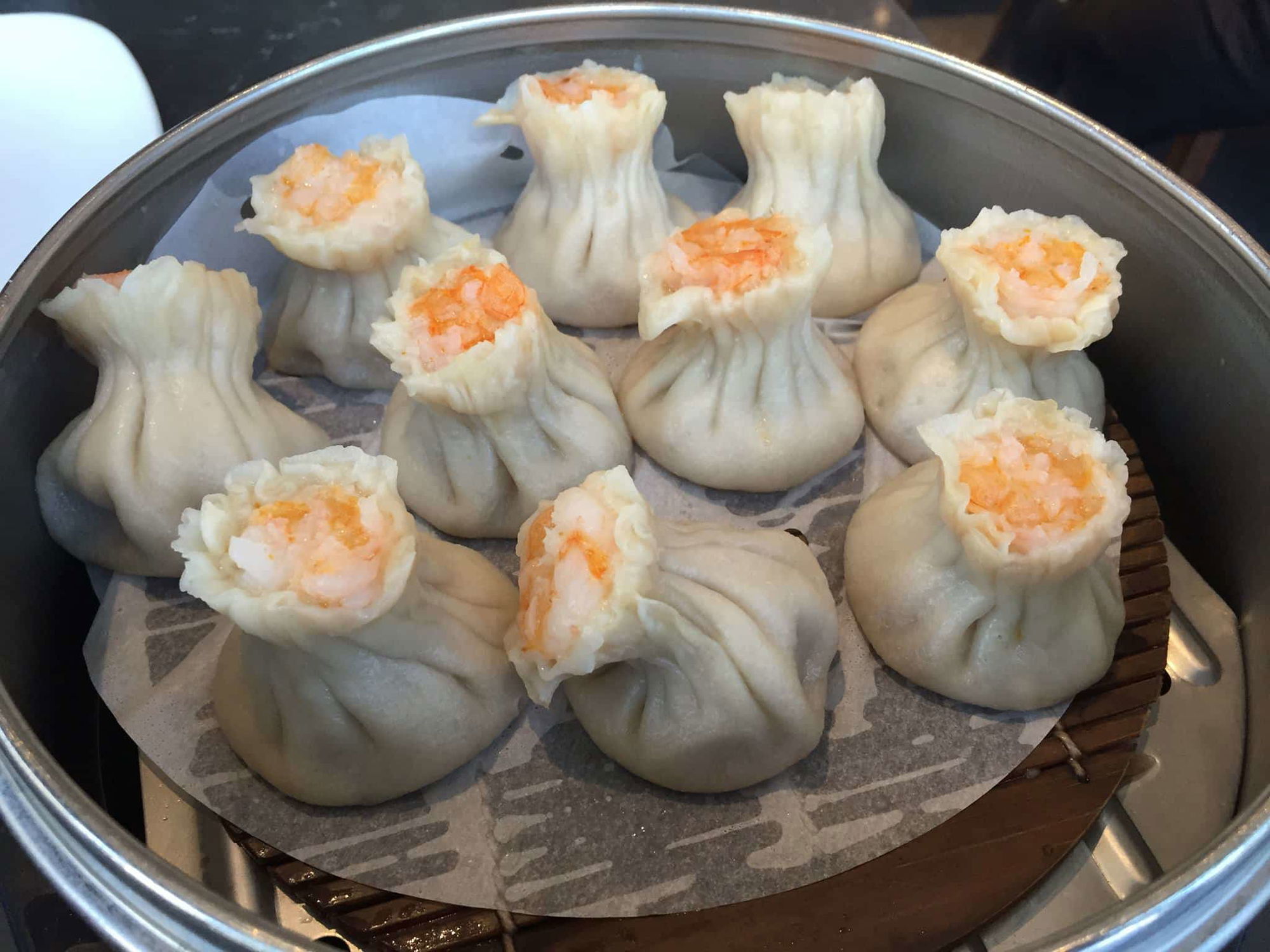
Also the xiaolongbao (soup dumplings) and shrimp shaomai which also have soup in the bottom are fantastic. You just have to be careful the soup doesn’t come exploding out by eating it carefully over a spoon.

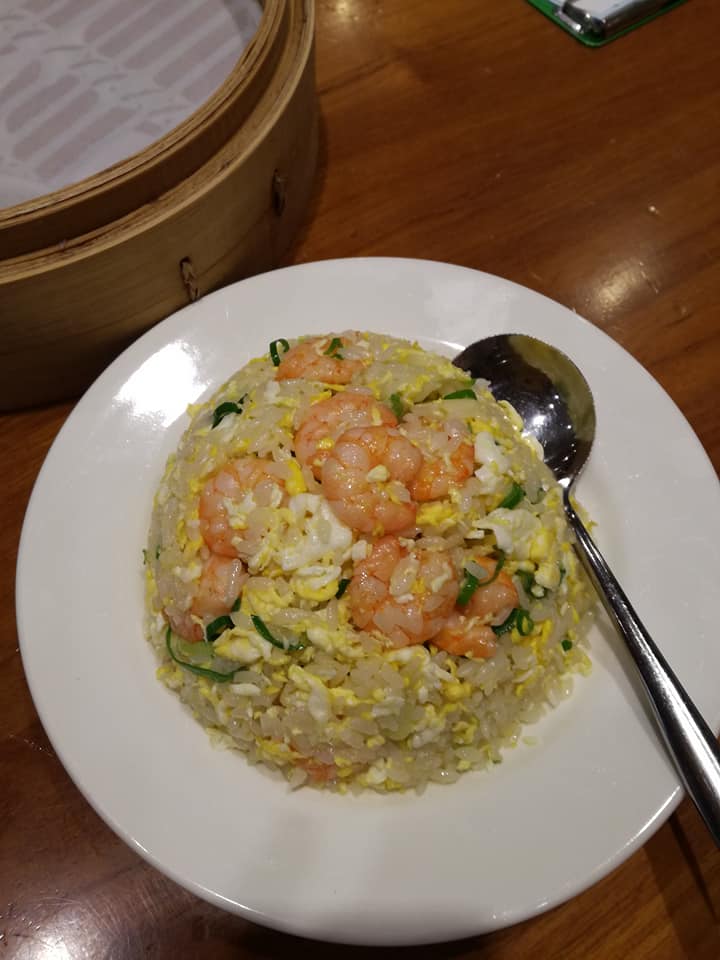
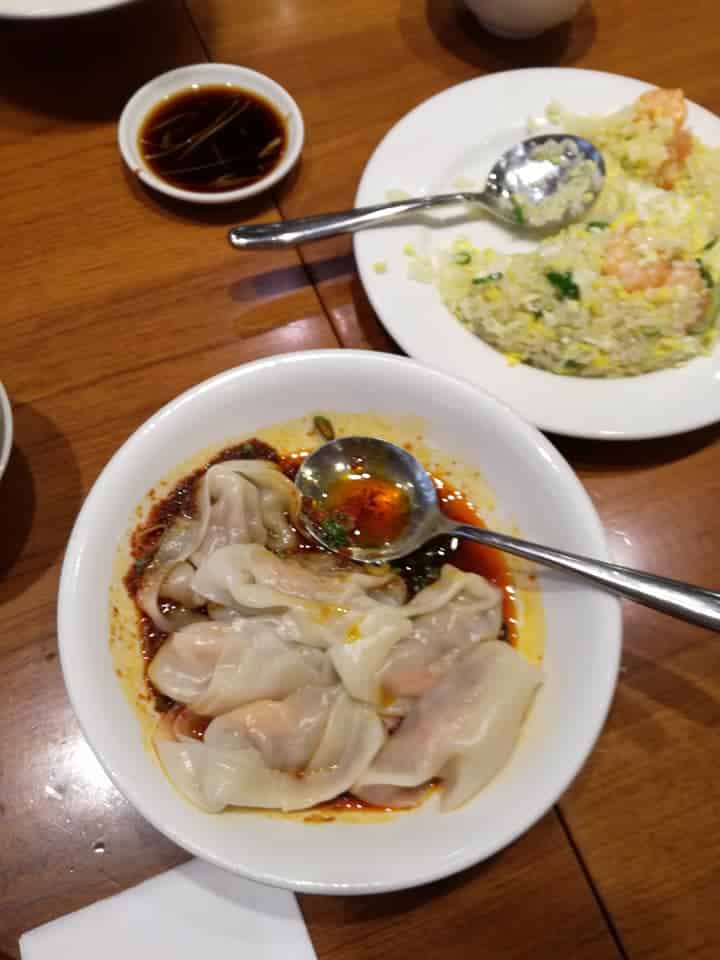
The sui gyoza was also great! I love the slightly hot sauce it’s in with all the unique Taiwanese spices. And don’t miss out on the shrimp fried rice as well.
But that being said when I told my friend from Tainan what I ordered she said, “no no no, the next time you go I will show you what WE Taiwanese order and you can experience something REALLY authentic.” Unfortunately I missed my chance this time but I am looking forward to the real experience!
I love the variety and traditional offerings here but I gave it a #4 ranking since it’s a worldwide chain -I want to give higher priority to the places that are particular to Osaka or privately owned independent small businesses. Which brings me to # 3:
#3 Fukuju
Fukuju appeared on my radar when I found it on a Taiwanese blogger’s site recommending her favorite places for expats. It’s parent store is in Taichung which is central western relative to Taipei. The owner’s concept was to create a steamed bun craze to contrast with the wave of Taiwanese dumpling stores popping up in Japan now. Back home these buns are typically eaten for breakfast or a small snack and heated up in the kitchen as opposed to being sold food-stall style. That being the case, Fukuju sells take out items with only a few hot ones available in store. So for eat-in make sure to go early because supplies are limited!
I was really impressed with the assortment of different buns. Some I had never seen or heard of before and some with incredible designs that look floral or braided! As this chain was born in Taiwan I had to believe this was an authentic choice for my #3 ranking!
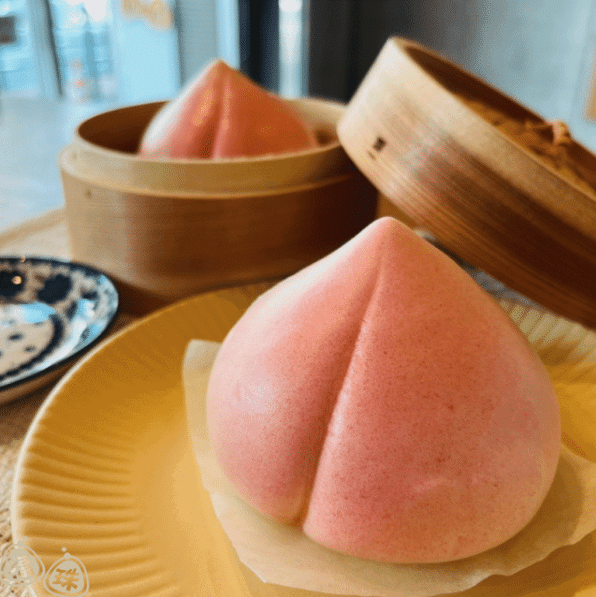
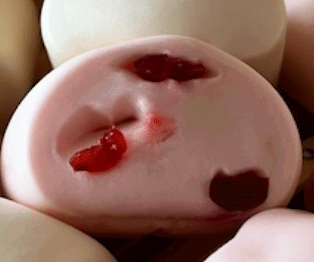
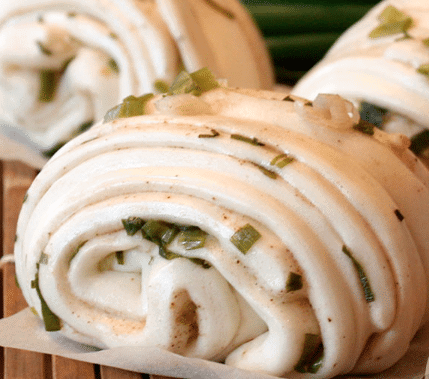
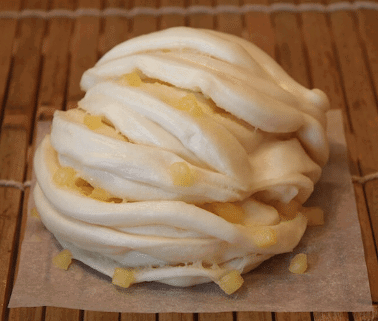
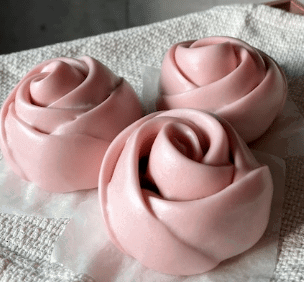
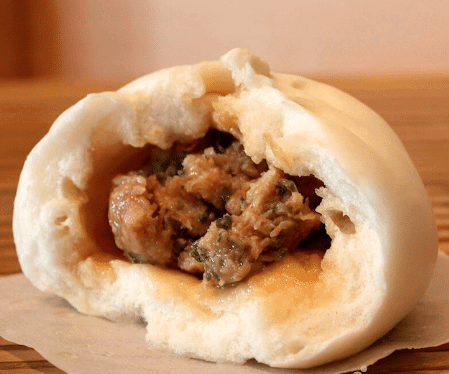
From dried cranberries to sweet potato, they have it all! There is no shortage of varieties and many of them are limited edition or seasonal so you never know what you’ll get on any given day! A lot of people compare the taste of these to another Kansai favorite chain Horai 551 but it really is unfair to do so as I discovered when I visited.
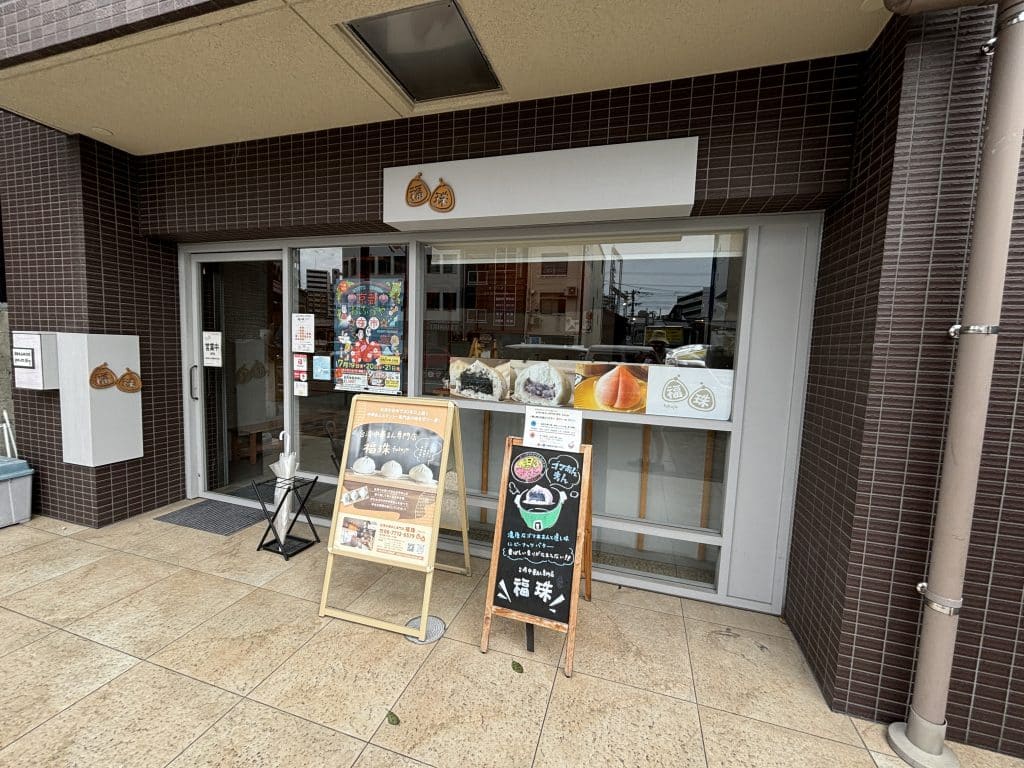
The amazing thing about the location is it’s directly across the street from the exit to the Osaka-jo Kitazume station -couldn’t be any more convenient! And on a hot day like it was in June when I visited, I was grateful to get inside ASAP. When I came to visit I wanted to try the fresh in-store varieties as well so I ordered 2: Taro flavor and pork. The store is quite small and there’s a tiny bench to eat on -but it doesn’t have a table!
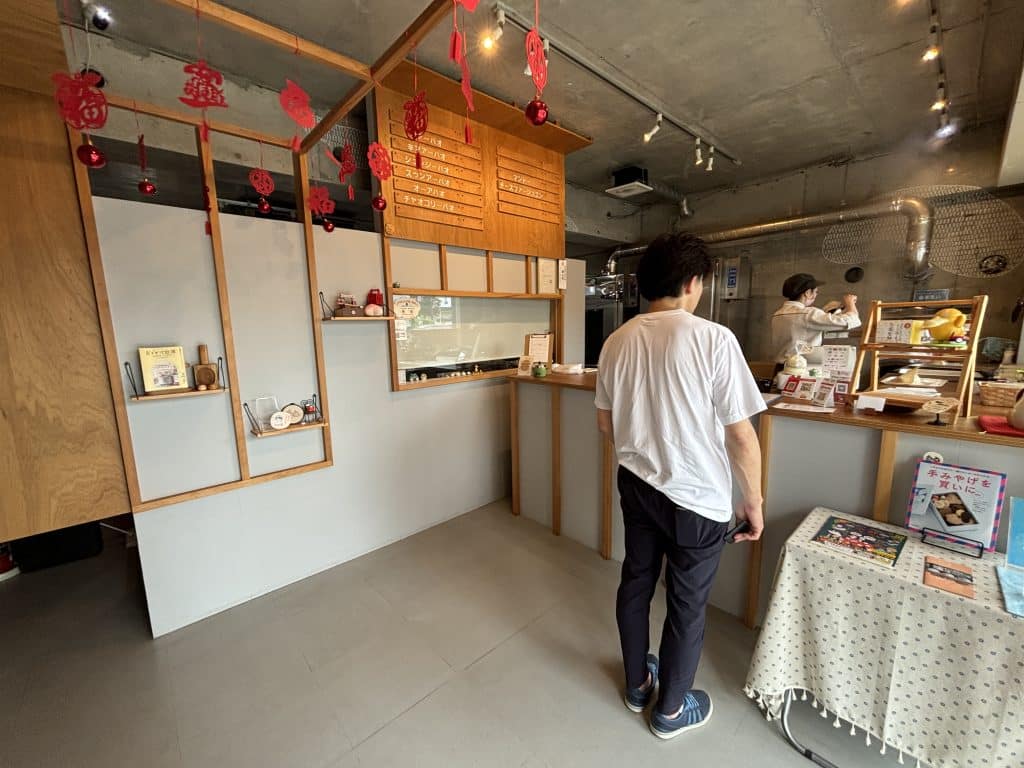
I forgot to get a picture of the seat but what you can see from this photo is the whole layout -it’s very tight. I was perched over this side with the tray on my legs to eat my buns. Here’s a POV:
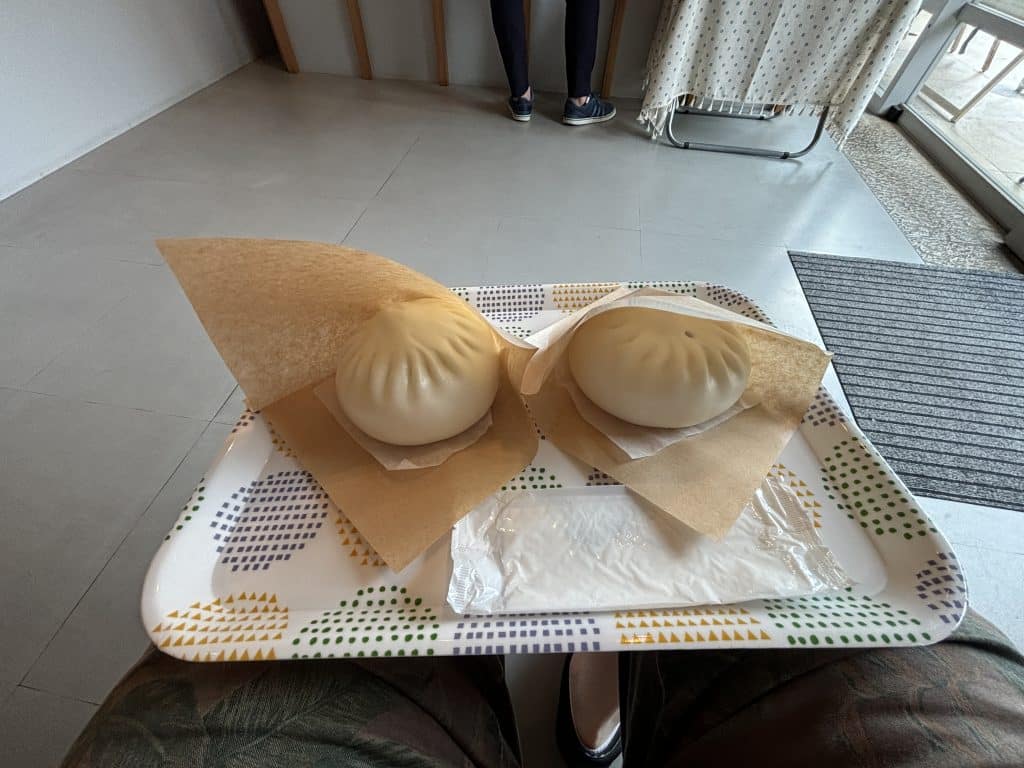
I am impressed by all the options which you can see in my first picture taken from the website. However when you arrive at the store they may not have everything that appears online. There are certain flavors reserved for different holidays like Mother’s Day etc. You can see the day’s options when you order at the front:
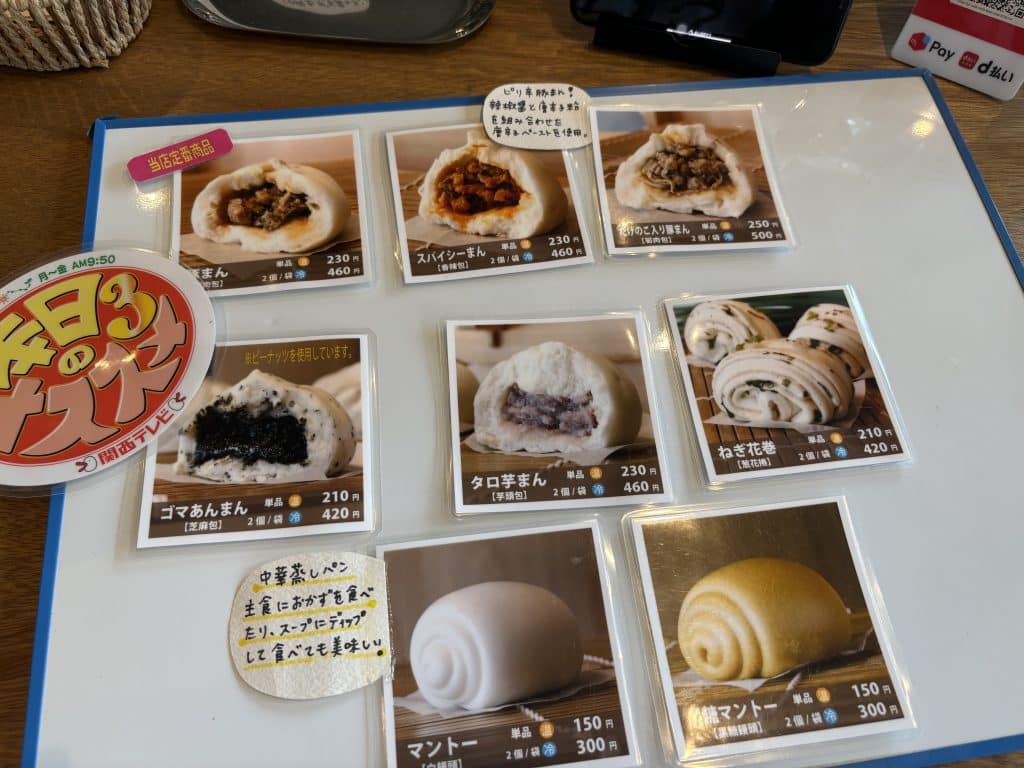
I made sure to order some sweet and savory varieties to get the full picture. You can see written on the left in Japanese that they were recently featured on Kansai Terebi which is a local TV station. That would explain the constant customers coming in on what was otherwise a quiet street.
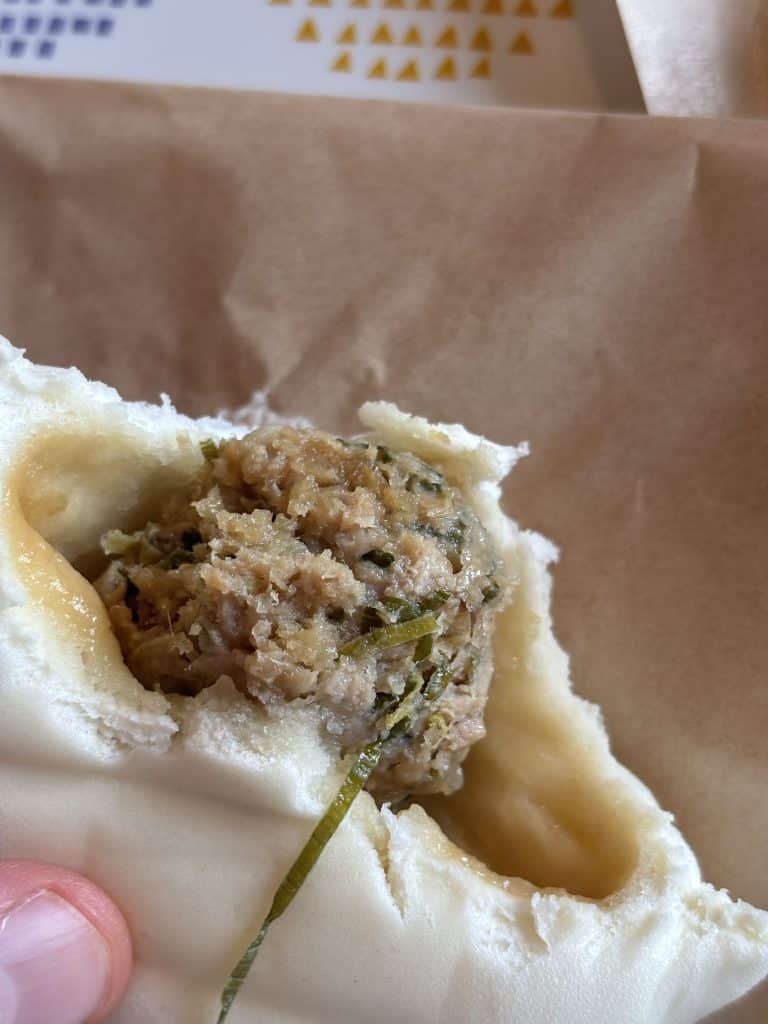
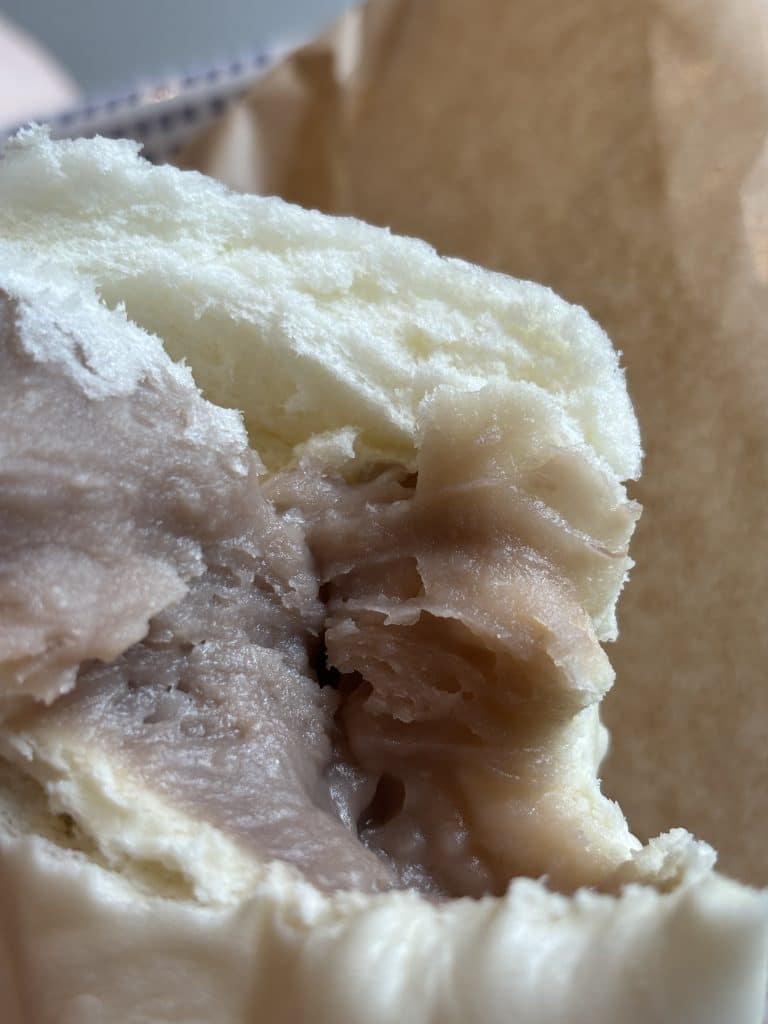
Here’s what was inside: (you’ll have to forgive my little bite marks.) On the left is the pork and the right is the Taro-imo an. The sweet and salty went well together and the pork was like a spicy little meat ball with onions and spices, very delicious! The sweet and fluffy bun accented both of them and the taro-imo -which I don’t see a lot of in Japan – gave me flashbacks to 85 degrees which is a wonderful Taiwanese bakery chain I enjoyed back home in Torrance.
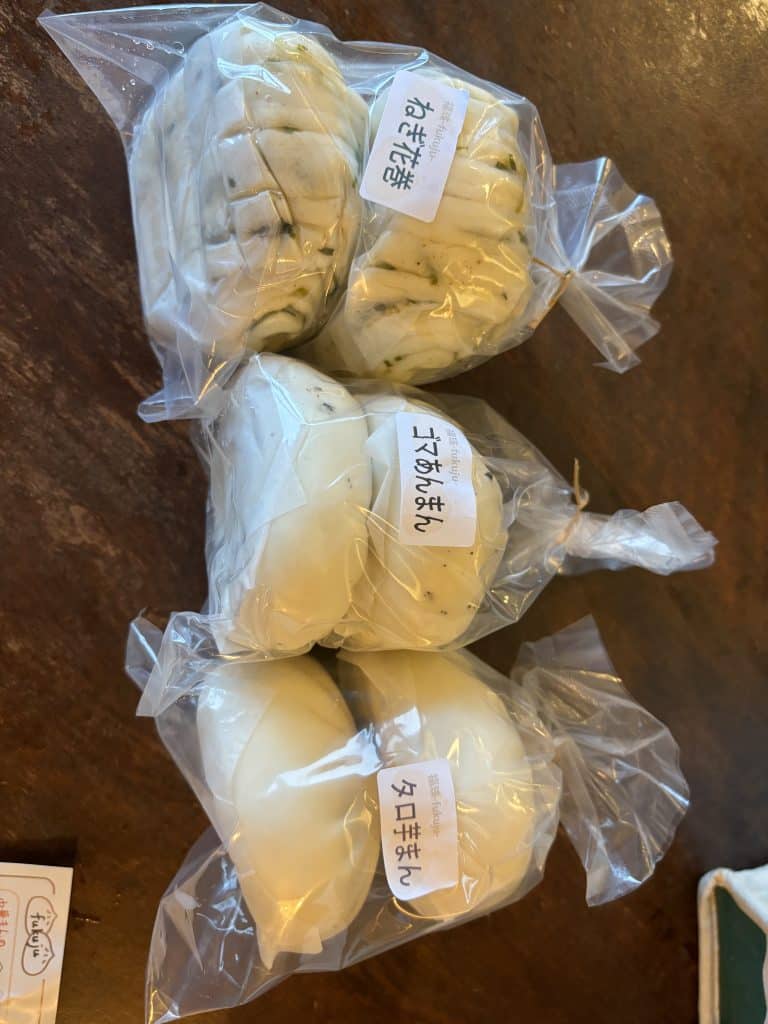
I was so impressed with these 2 that I decided to order some more to take home and I should mention I wasn’t able to achieve the same level of softness in the buns when I microwaved it. They give you an instruction manual on how to do it.
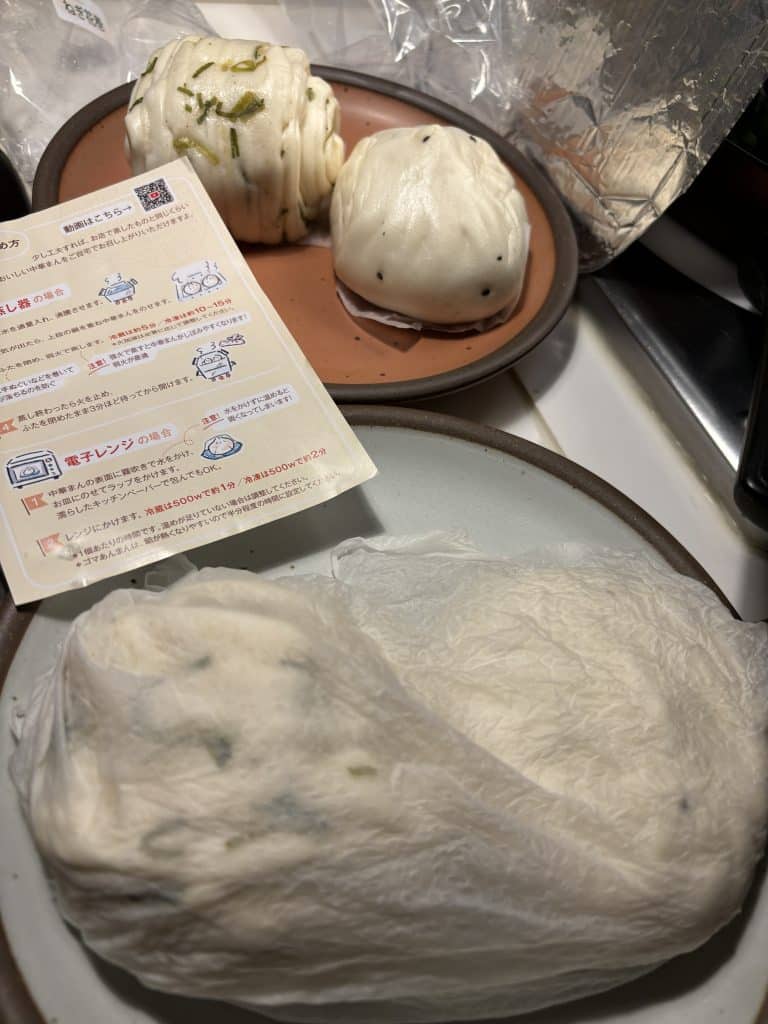
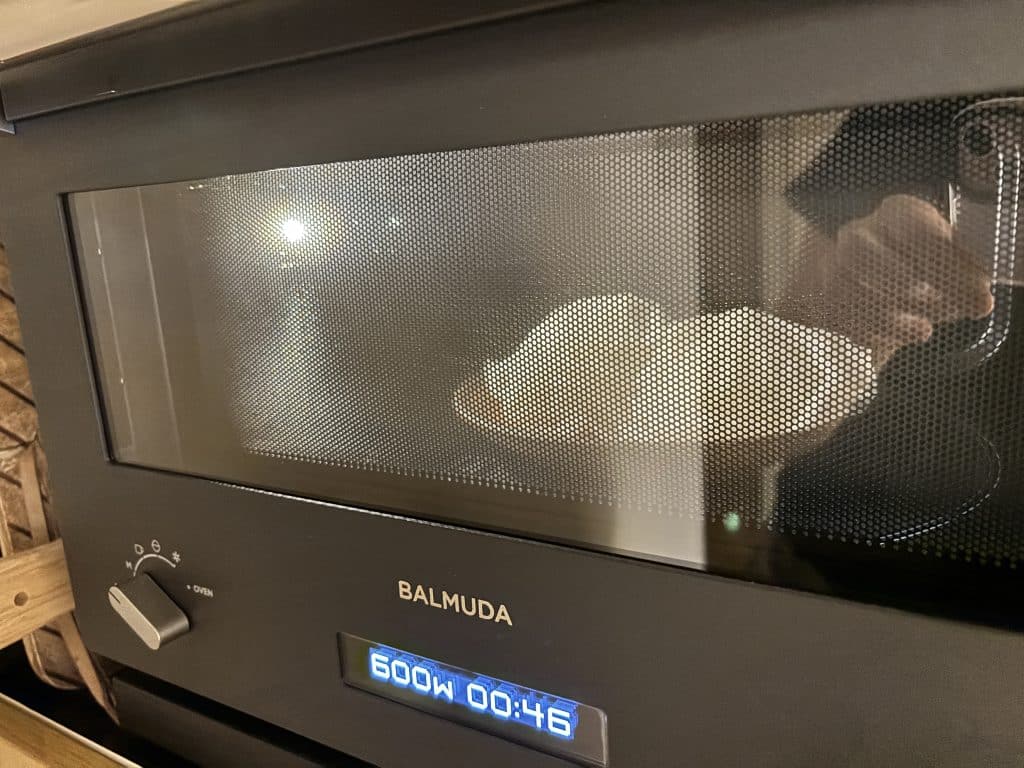
It wouldn’t have been as noticeable if the ones in store weren’t SO soft. I ordered the onion and sweet sesame flavor for my next buns to sample:

Setting aside my terrible cooking skills, the filling on the sesame bun was incredible. It was sweet yet oily. Another thing I should mention is for the take home orders (which are cold) you must order a minimum of 2. While the (hot) orders eaten in-store can be ordered 1 a-piece. If you are looking to try many different types perhaps in-store is the best bet.
As an addendum. I just tried cooking the Taro flavor buns in my home steamer and was able to recreate the softness I had tasted in store! Moral of the story: steaming them is best!




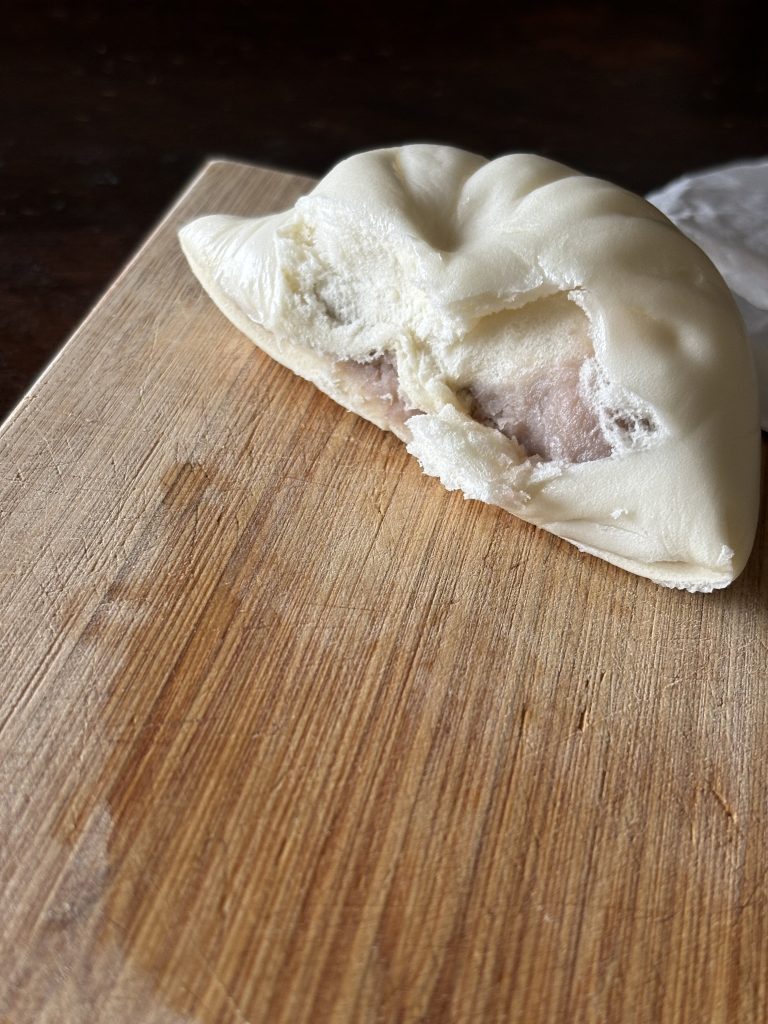
The directions are easy, just place the bun in the steamer and cook for 5 minutes. (Mine was only able to fit 1 bun.) It tasted so much better this way!
#2 Wanna Manna

Wanna Manna is unique in that they focus on Taiwanese breakfast. (I covered it previously in a different article if you want to do a deep dive on it click here.) That being said, it’s a lot more extensive than you might think.
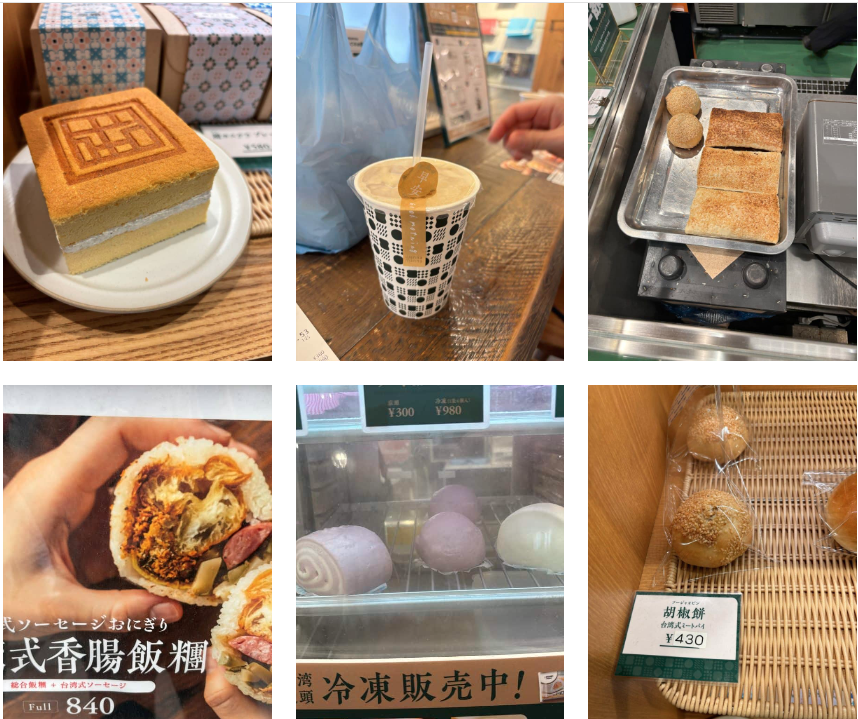
But what is Taiwanese breakfast you must be wondering? You might be surprised to hear that it’s not cereal and milk with orange juice. No no, it’s fried bread sandwiches and soy milk soup (also with fried bread in it.) Add to that some scrumptious Oolong tea and Taiwanese onigiri -the list goes on and on!
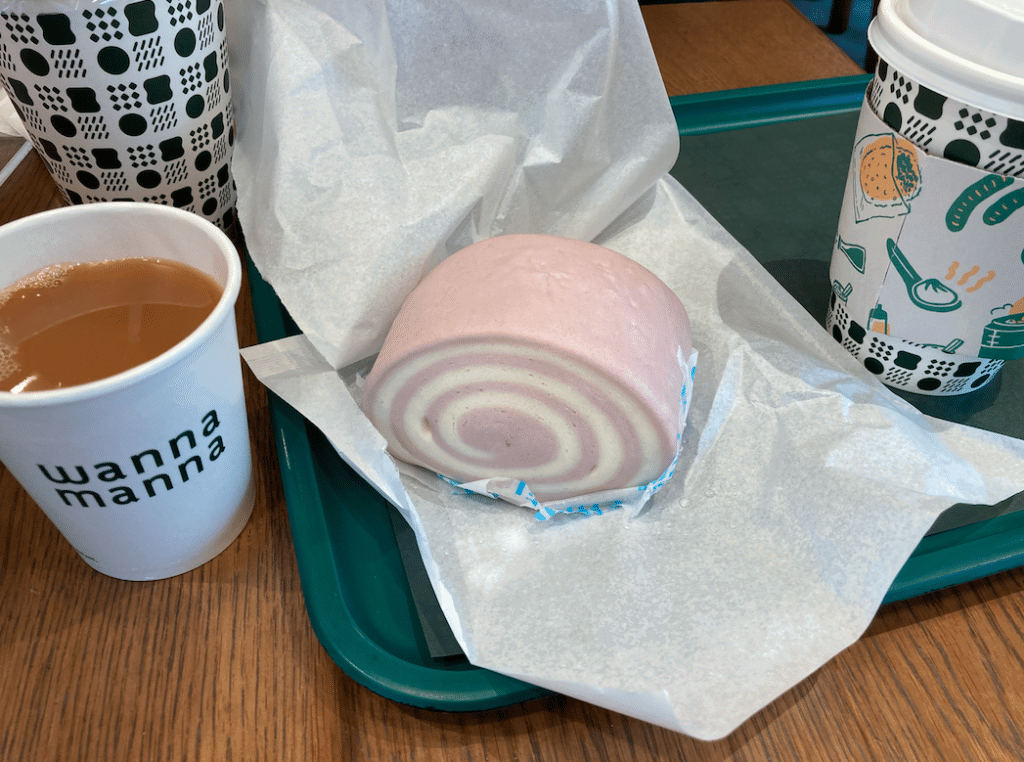
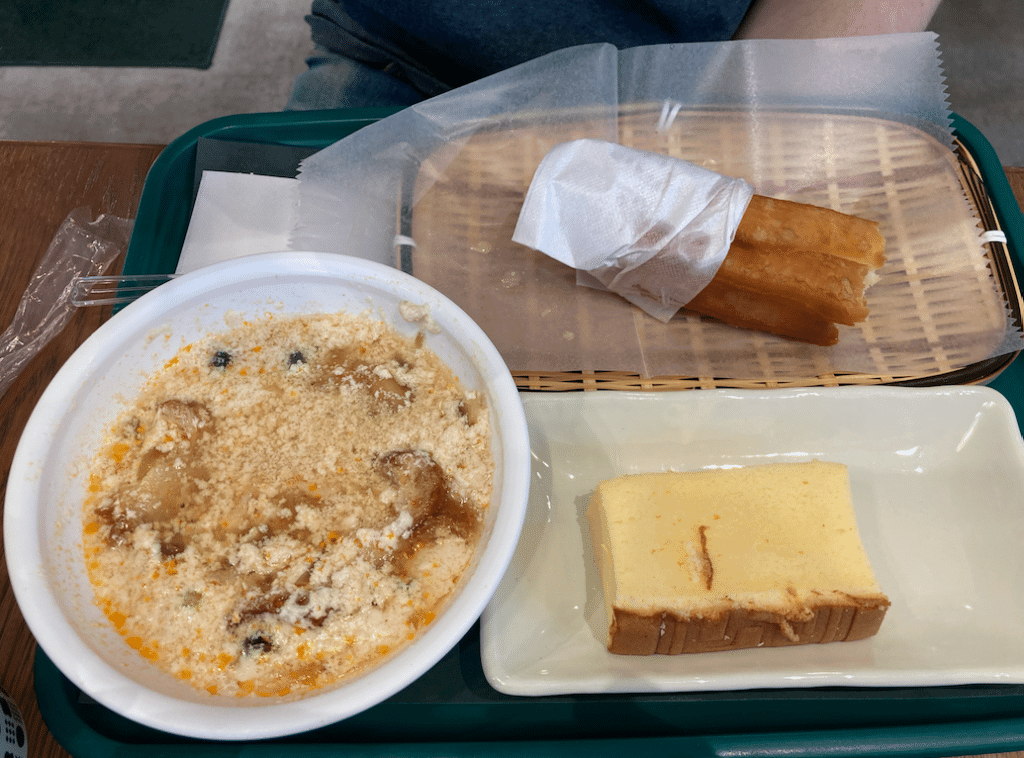
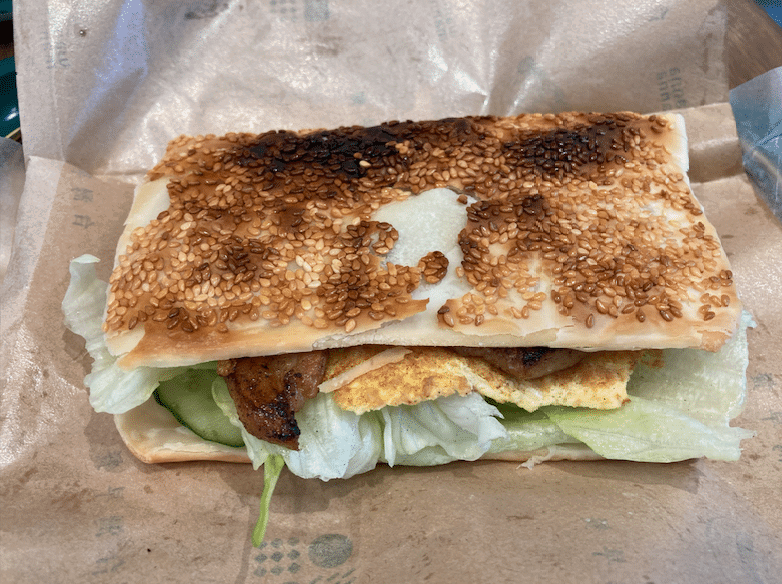
Another thing I love about Wanna Manna is it’s BORN AND BRED in Osaka. They’ve been so successful a second branch opened in Tokyo recently too! So how do I justify the #2 ranking? First of all, they beat Fukuju in terms of variety. They beat Din Tai Fung because they are Osaka-based and an independent small business. And most important of all, I haven’t eaten anything here that I didn’t like!
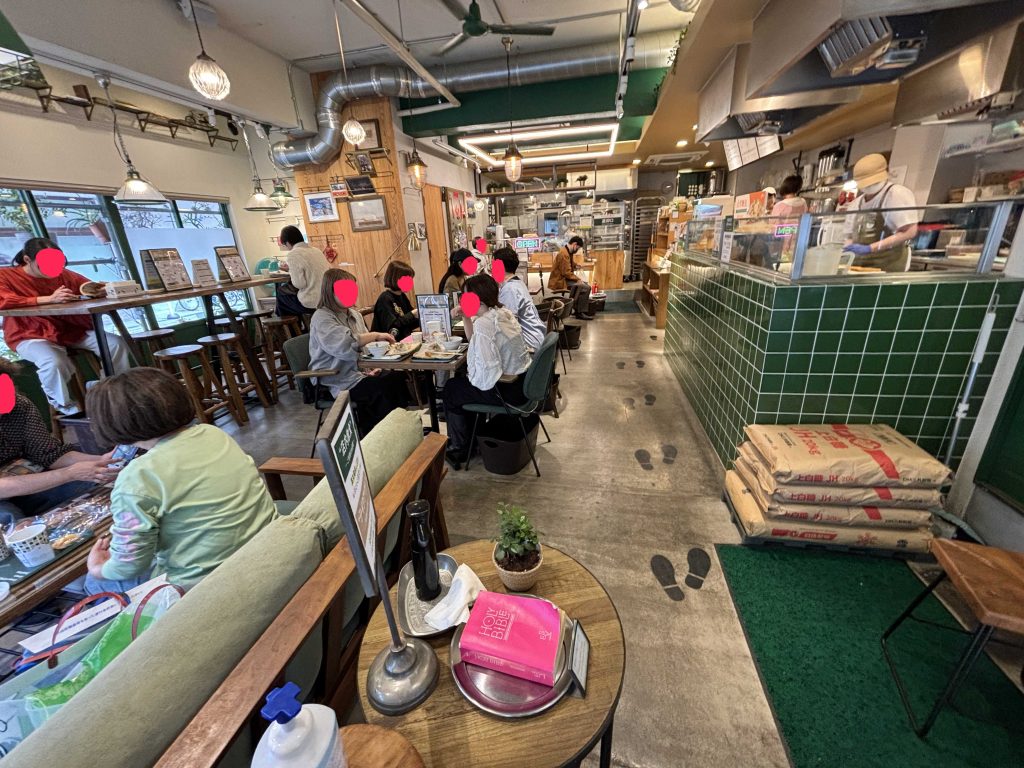
The crispy bread on the sandwiches is fragrant and fresh! Everything appears to be completely authentic and offer the same sorts of things that a local could expect to find at a breakfast joint back in their home country. When you compare that to some of the Japanese fusion type restaurants we mentioned further down the list you can see why I gave this a boost!
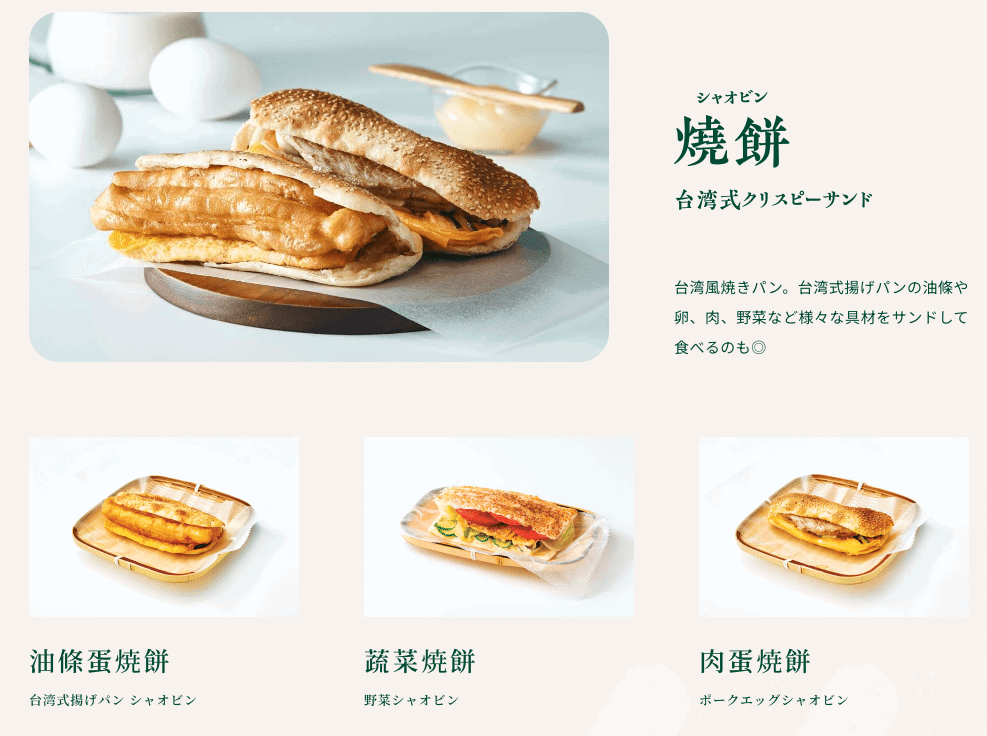
And right down the street from here you have a great pineapple (and other fruits) cake and castella shop that is linked with Wanna Manna, called Banka. Anything bought here can be eaten at Wanna Manna along with your order! Great system!
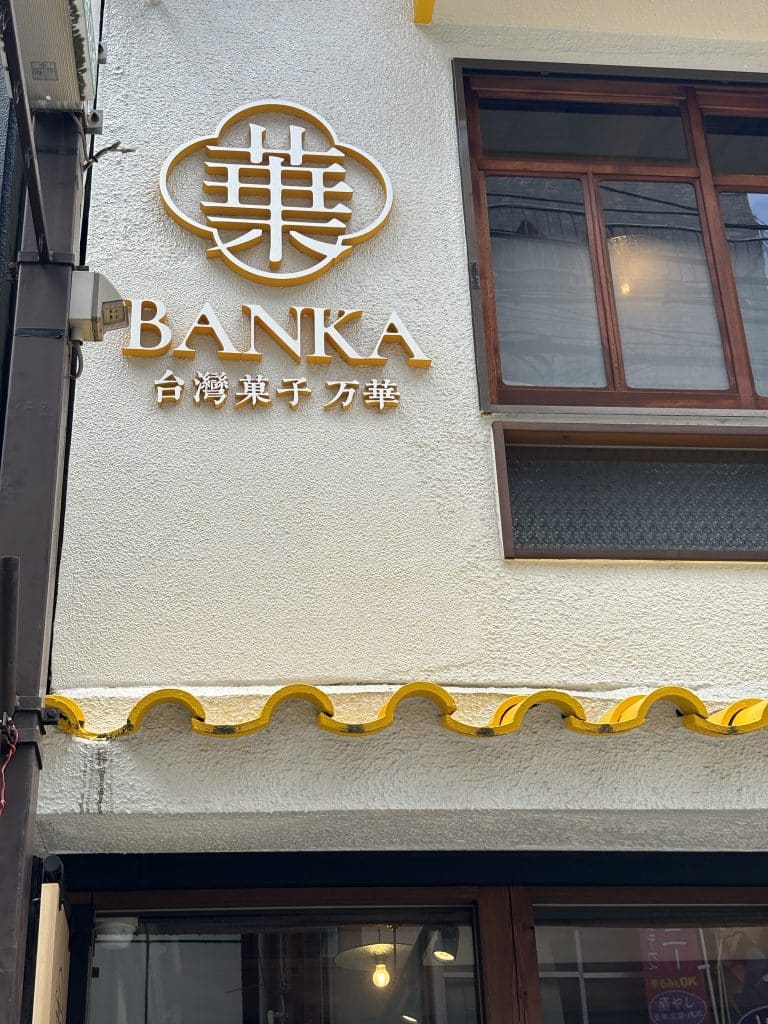


#1 Gushan

Where is the BEST Taiwanese food in Osaka? Gushan in the Fukushima area (Northern Osaka.) Why did I rank Gushan as #1? For a few reasons. First, it’s run by a mother and son from Taiwan. So you have the “cute factor.” It’s an independently run small business that recently did a renewal opening in March and was featured in local eateries guide Meets which is how I found it.
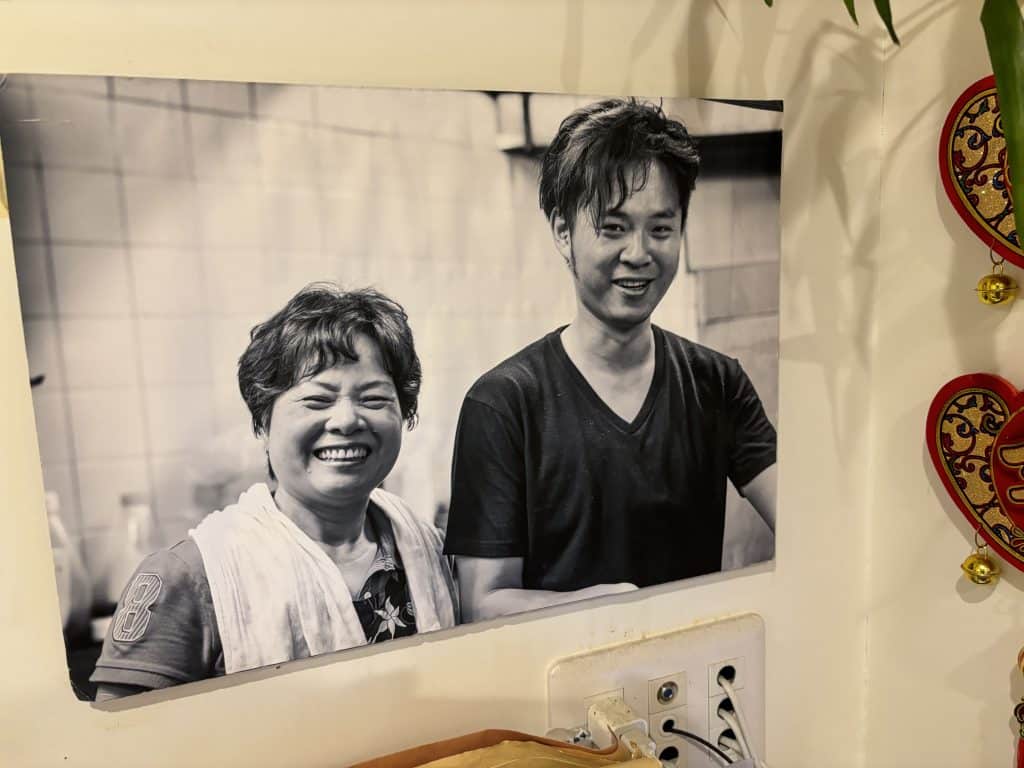
Next reason I loved Gushan? It can be summed up by what I witnessed when I visited: the mother stuffing homemade Taiwanese sausages at the counter table while chatting away with customers. I totally respect the dedication to creating everything handmade coupled with her multi-tasking skills! While she squeezed, the kitchen seemed to be ENTIRELY manned by the son. The restaurant was small enough that these 2 and a hired waiter could handle the whole store. It was very “homey.”
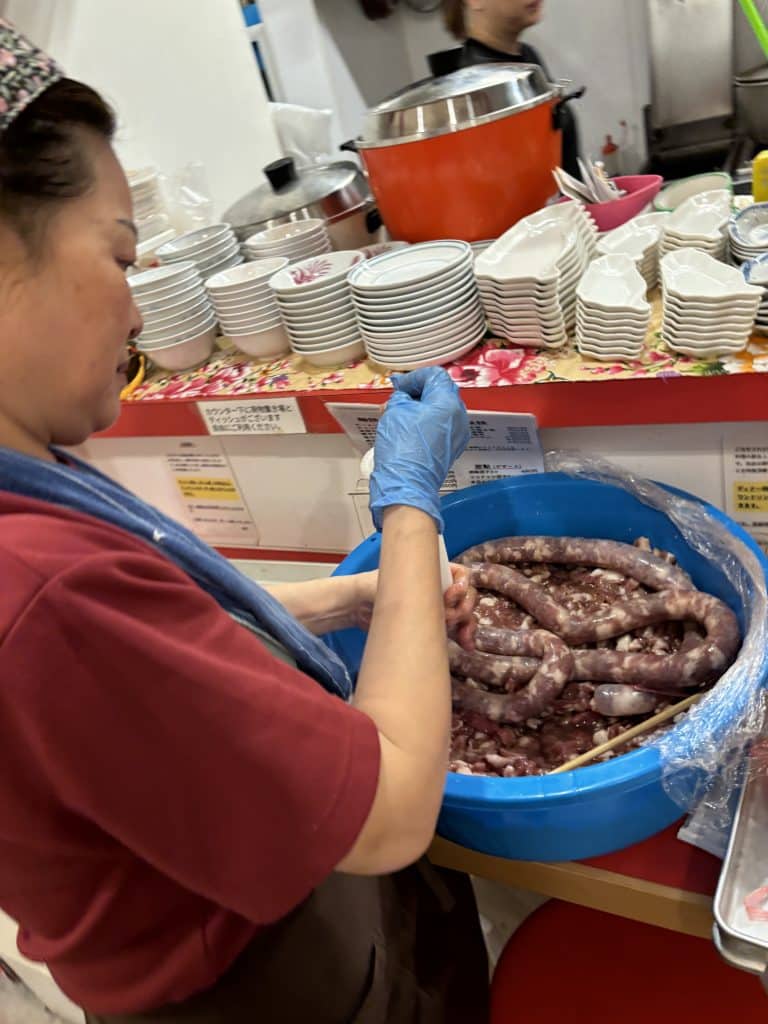
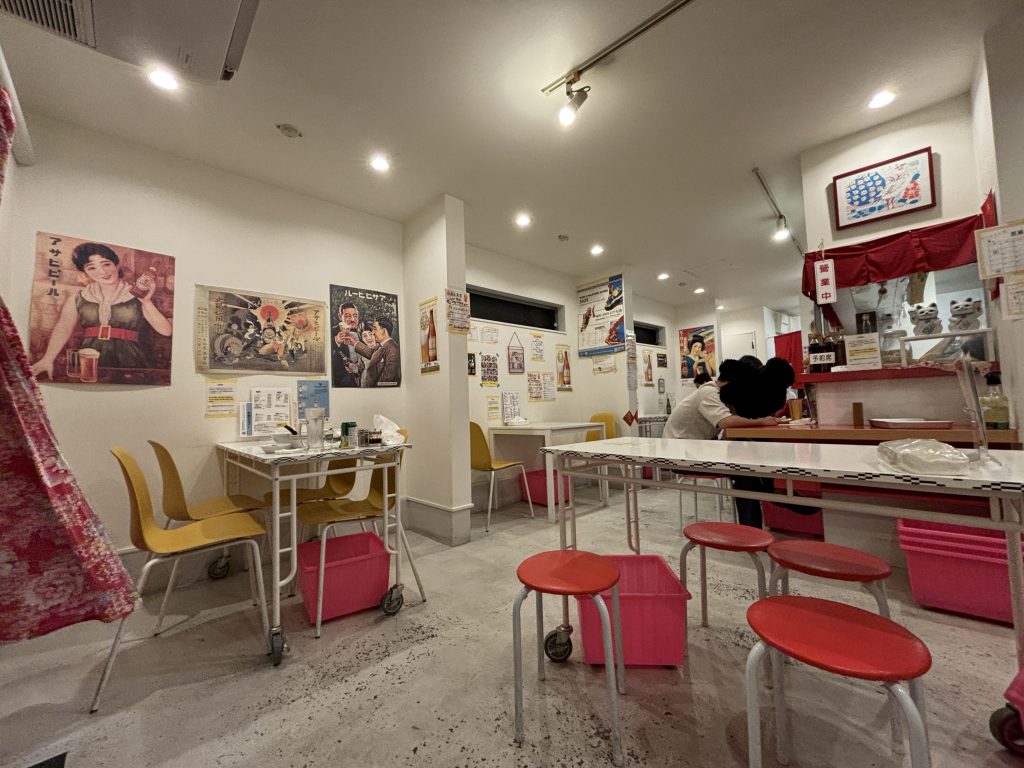
But what really caught my attention was the food. I can’t speak on the Taiwanese breakfast (which they offer on the weekend) but what I did order gave me a jolt of deliciousness. (Here’s the breakfast menu on the bottom ↓ which includes, egg crepes, meat buns, chive “pie,” etc. Homemade soy milk, homemade rice milk, daikon mochi, etc are also available: it all looks appetizing, I’ll have to come back again!)
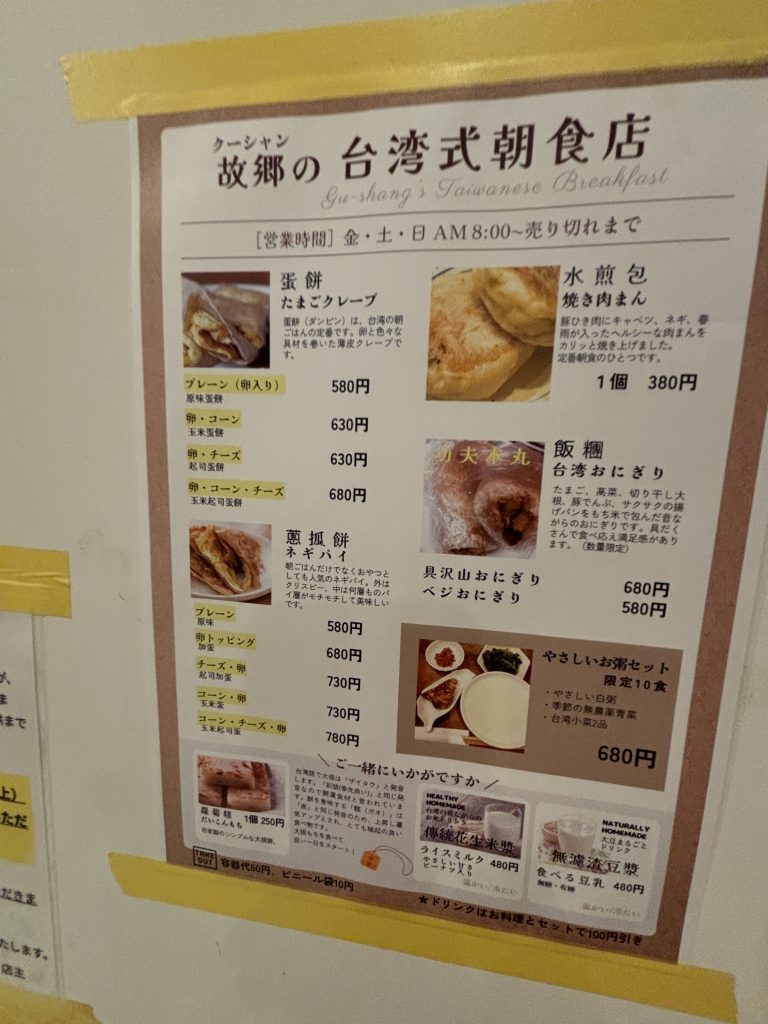
When you come here during the dinner hours there is a 1 drink minimum which isn’t too bad since the menu itself expensive. The refreshments include imported Taiwanese oolong tea which I ordered cold (in the middle) and on the left is jasmine tea. The leaves brewed in the pot had an amazing fragrance ( I swear by these teas which are night and day different than the ones from China.) Taiwanese sodas and beers also available (on the right.)

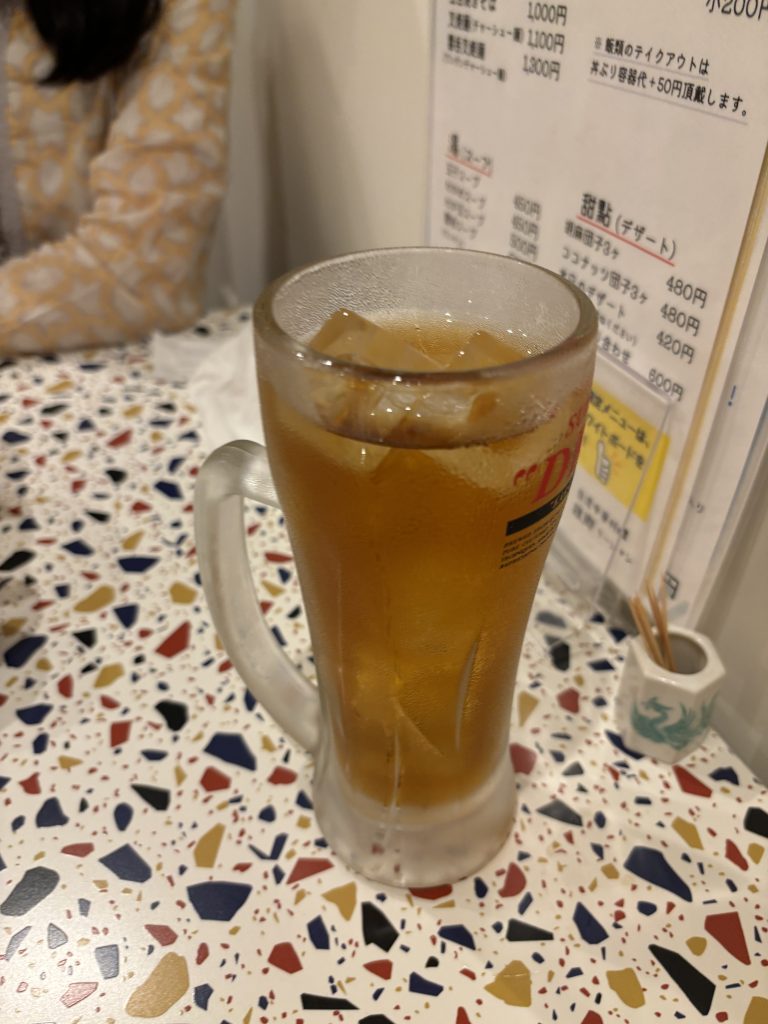
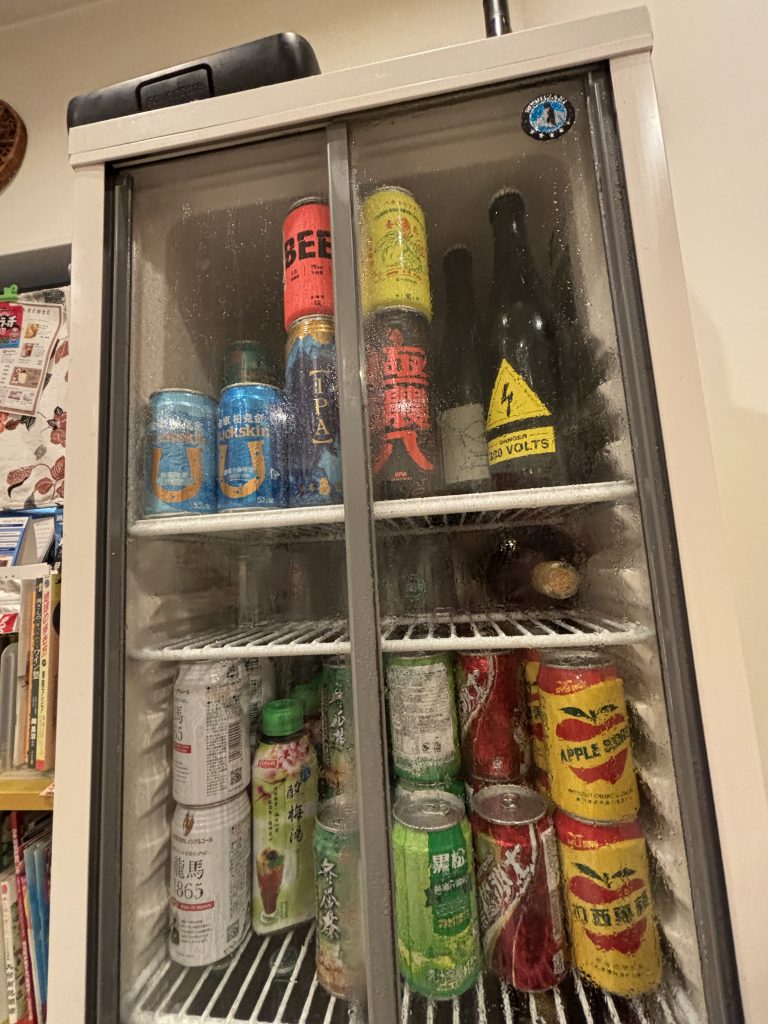
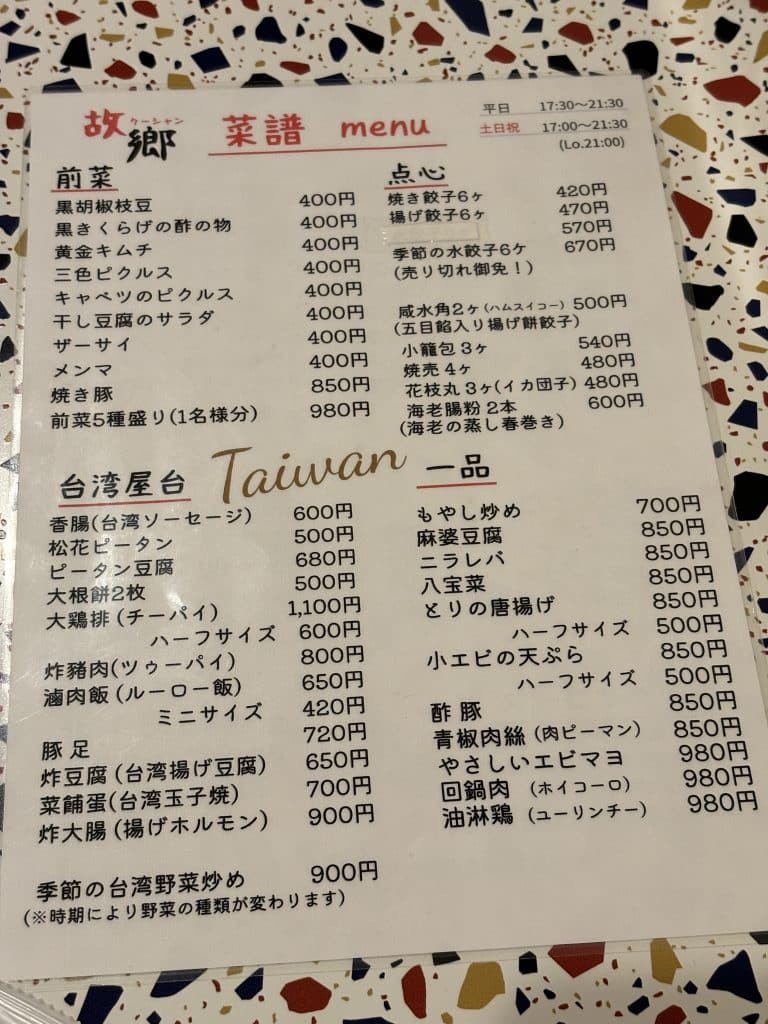
Next I ordered some boiled gyoza with corn inside. ↓ These are seasonal so they were filled with that amazing Japanese sweet corn I’ve been munching on so much these days! Much different than Japanese fried gyoza they’re filled with chives and spices and the house dipping sauce.
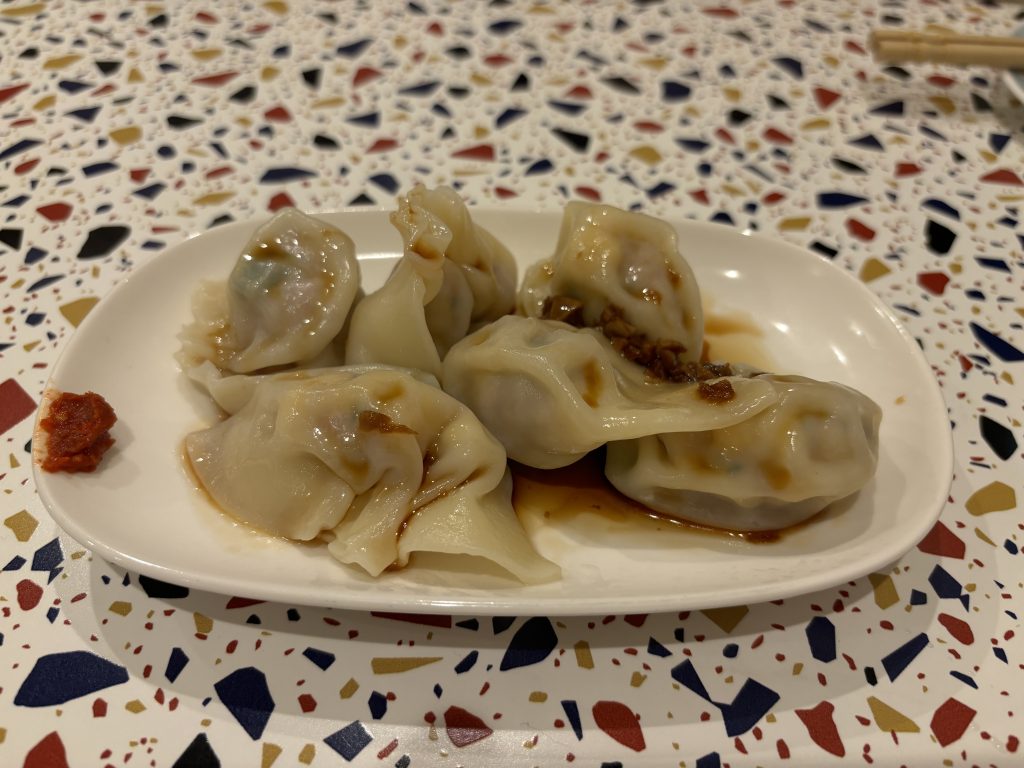
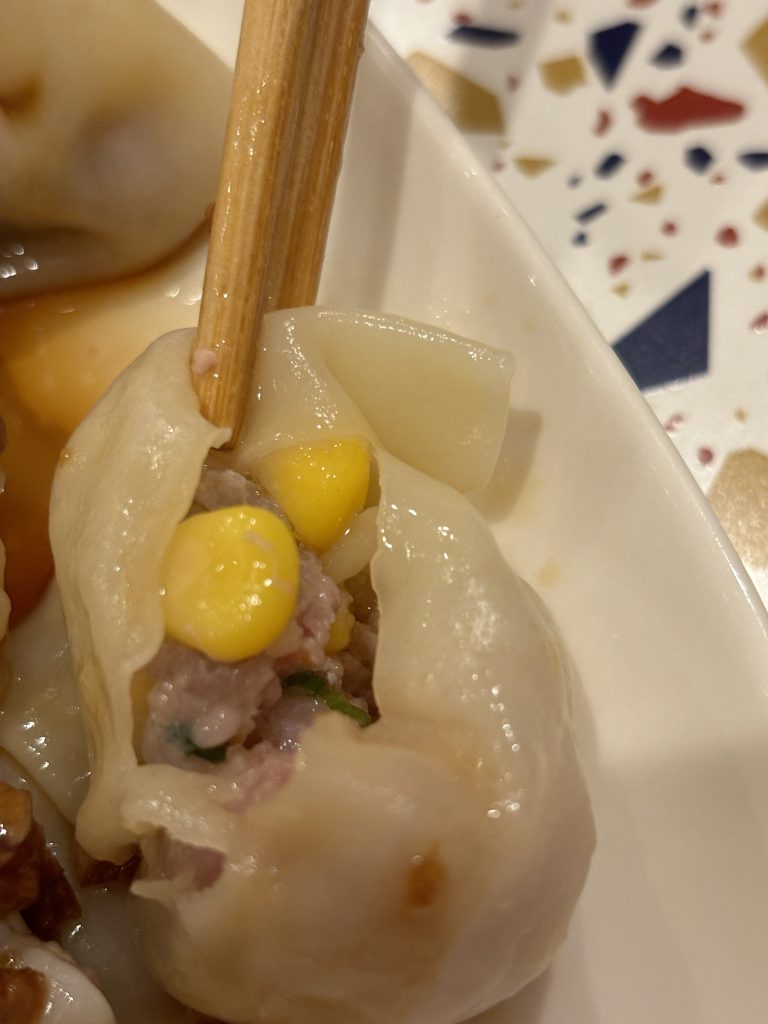
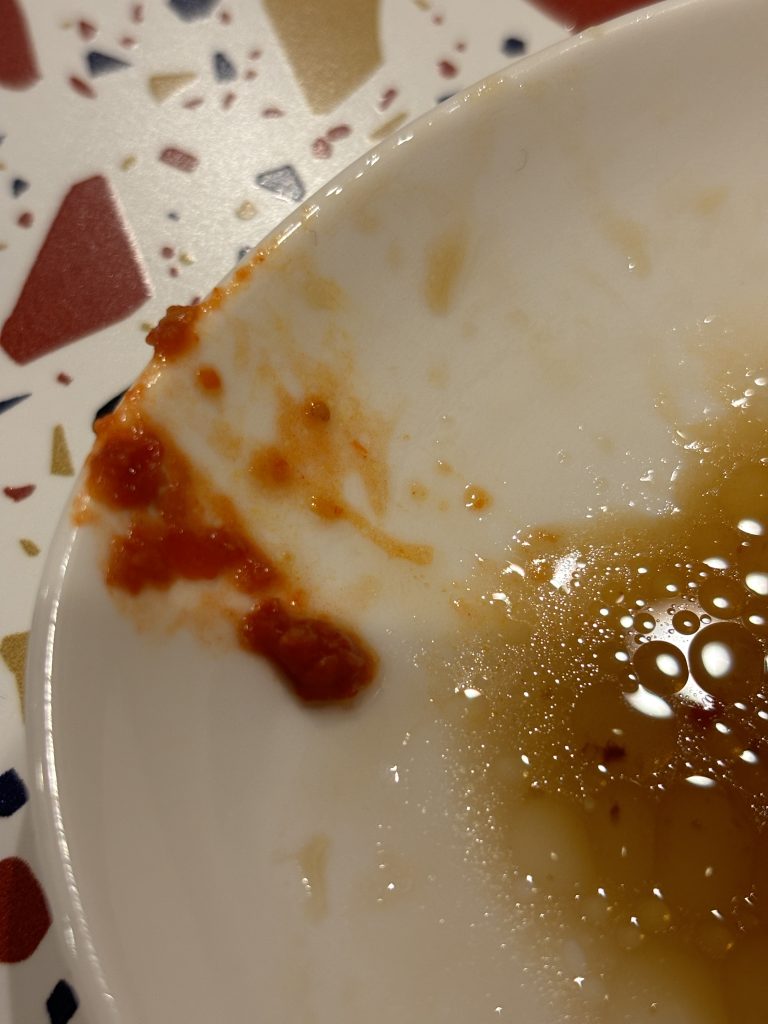
Next was the Lu Rou Fan. ↓ It was covered in a fragrant sauce and cooked to perfection. Another dish you see at Japanese-Taiwanese style restaurants but when you take a bite of this you realize “wow, so this is what the REAL thing tastes like!”
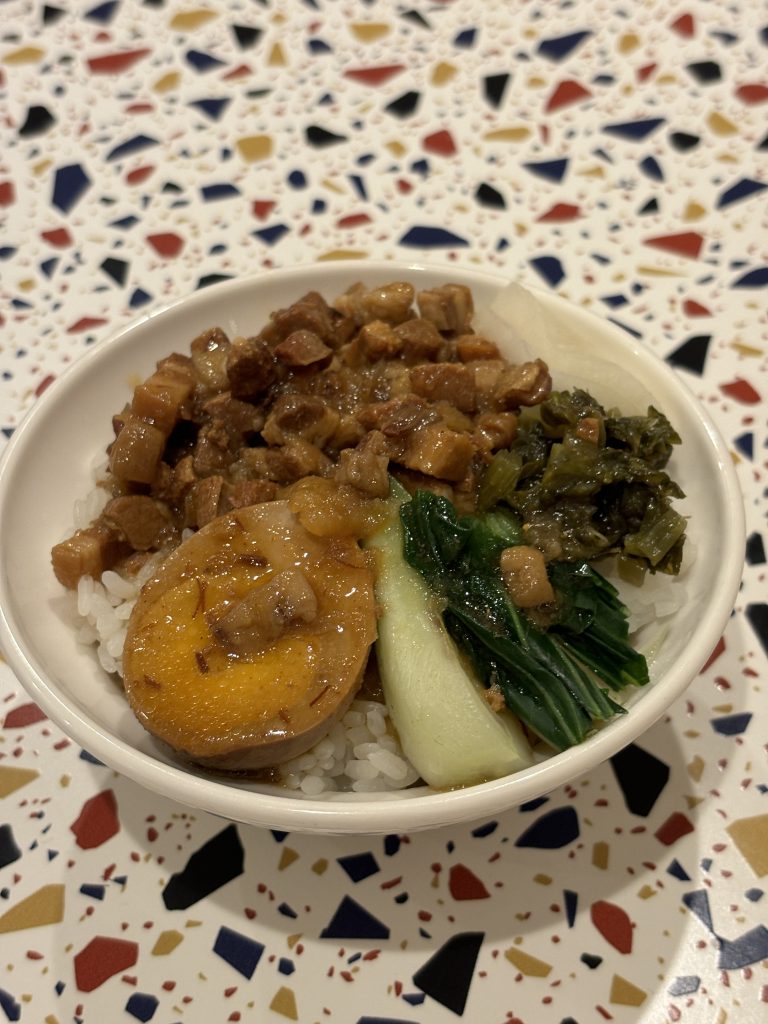
Next came the fried chicken listed as “chi-pai” which I ordered in “half-size.” Even so it was pretty large. The big standout for this dish are the amazing (unidentifiable) Taiwanese spices that are cooked into the coating. I had another “so this is what the real thing tastes like” moment as I took my first bite. The tender and moist meat, the crunchy outside with those punchy flavors were irresistible and it was gone before I knew it. I’ll have to remember to savor it more next time and eat sloooowwwly.
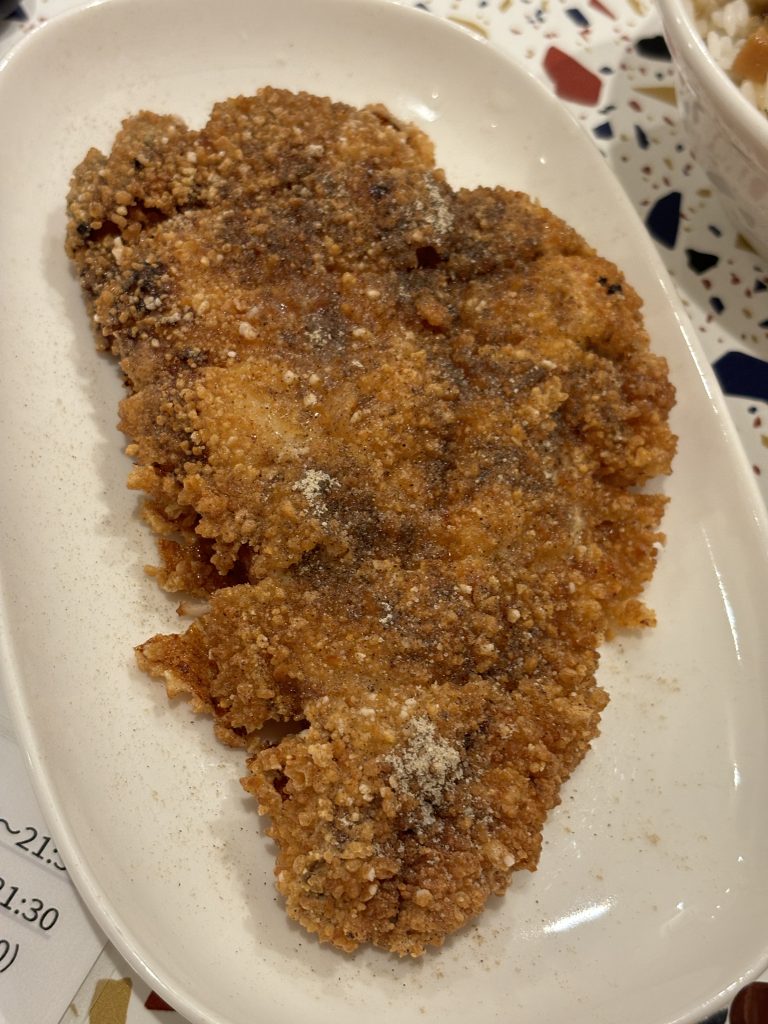
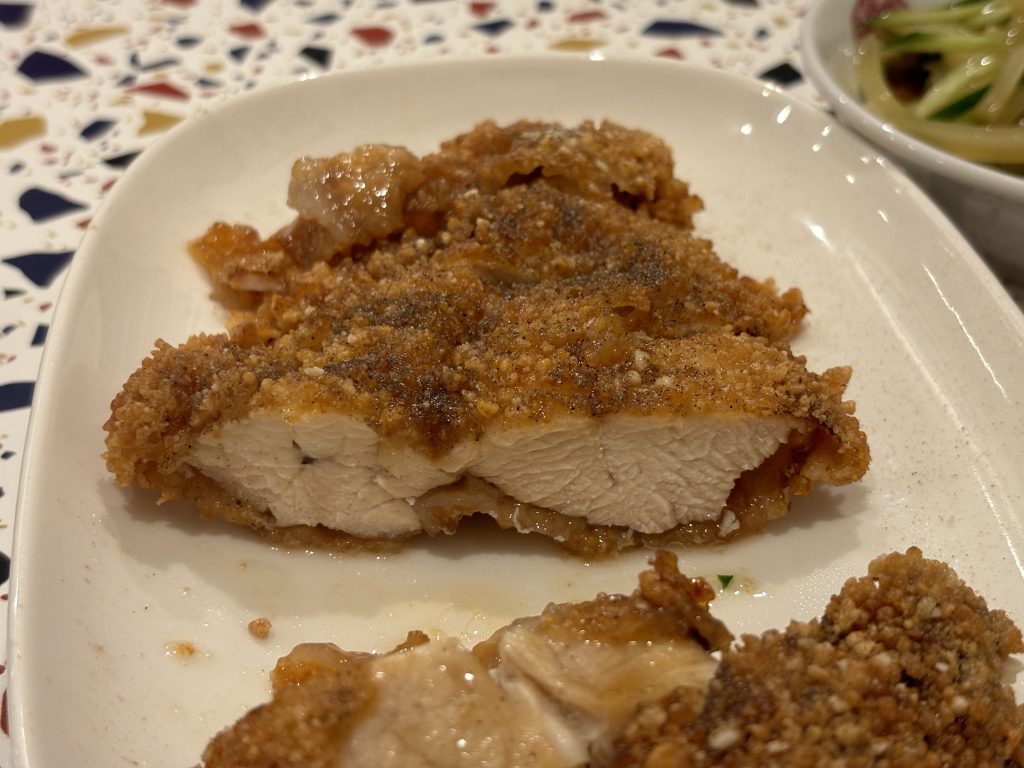

For greens I asked the owner what “za-sai” was and she explained they’re served here as traditional pickled vegetables. ↓ So I had to try some of those. They were much different than Japanese in terms of the sauce and spices. Very refreshing on a hot summer’s day and I imagine the saltiness would go well with a beer.
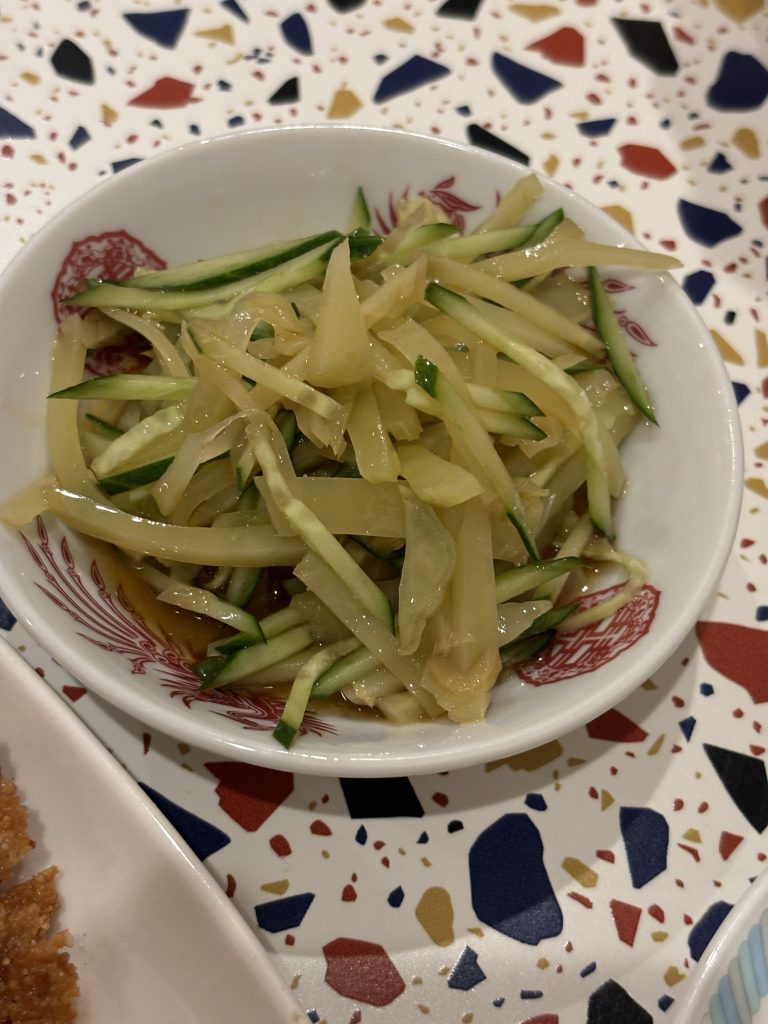
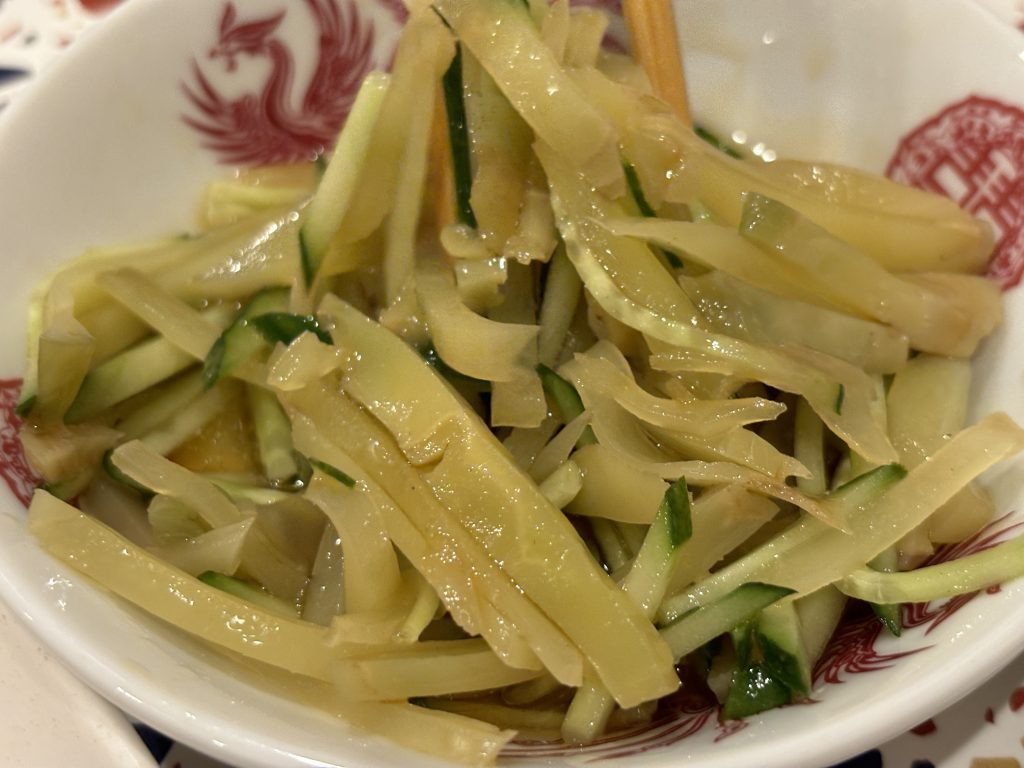
Here is a long-shaped boiled gyoza that was filled with shrimp and cilantro. As you can probably see by the image, the wrapping was chewy (mochi mochi as they say in Japanese) and everything was handmade fresh to order. You could tell because it took awhile for each dish to come so I was able to get a breather in between each plate.
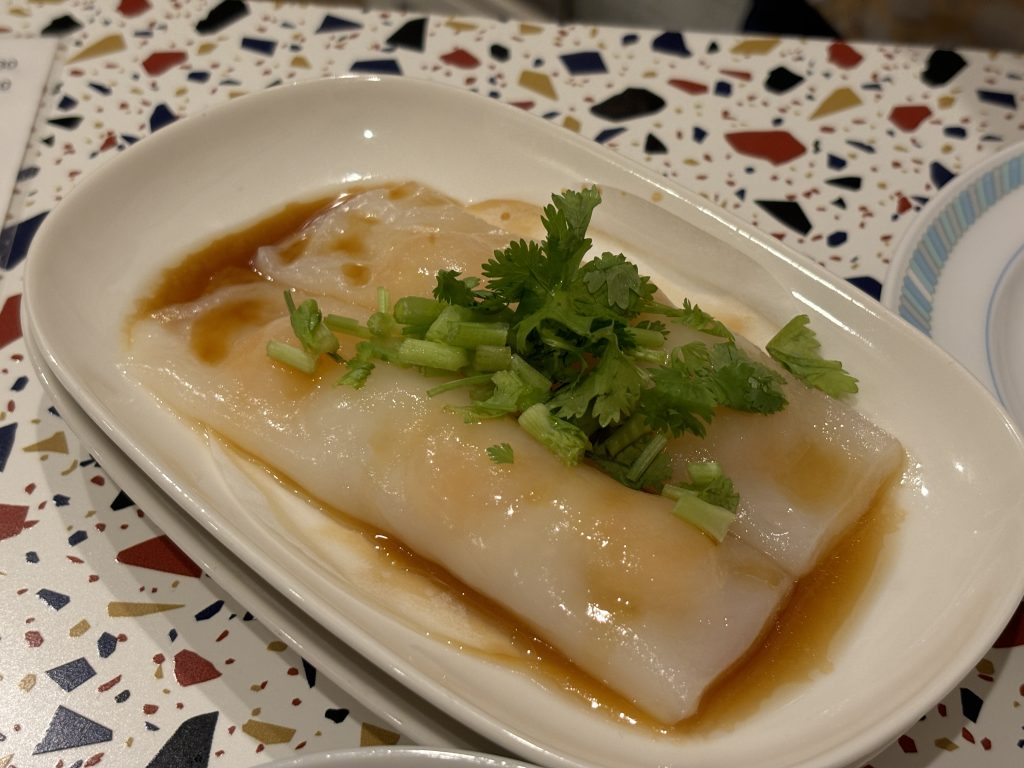
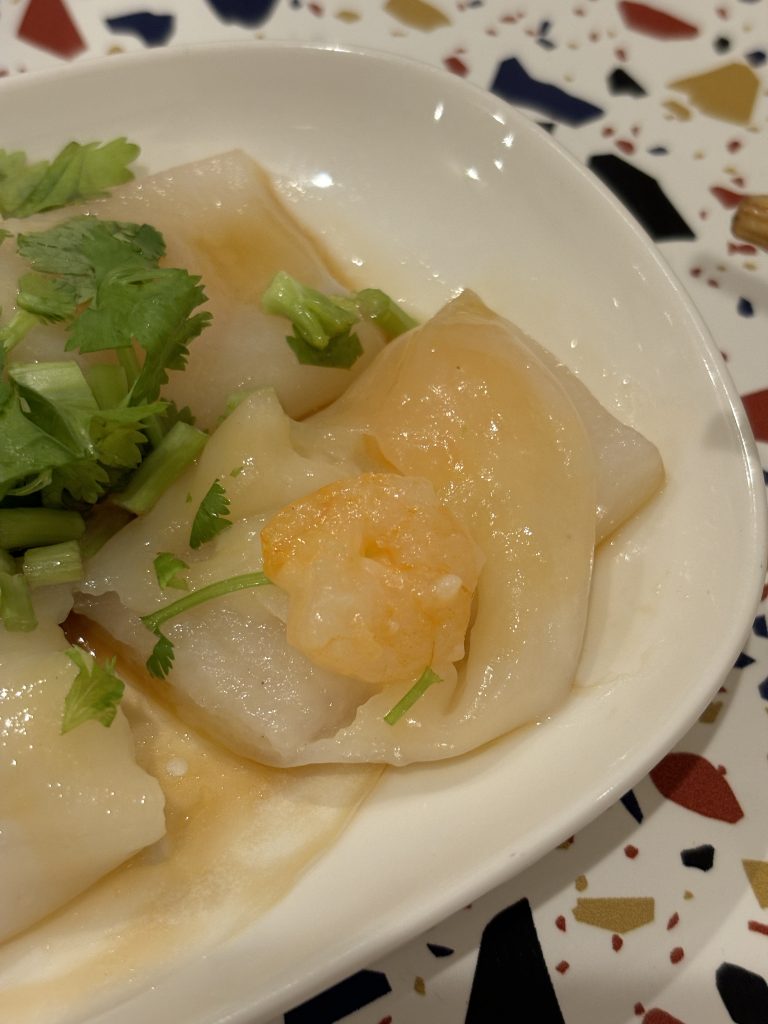
Today’s “seasonal Taiwanese vegetable” was “kintoki-na,” a rare purple vegetable I had actually seen in some vegetable stalls around Kansai but was too afraid to try it (until now.) The shop “Mama” convinced me to give it a shot and this is what came out:
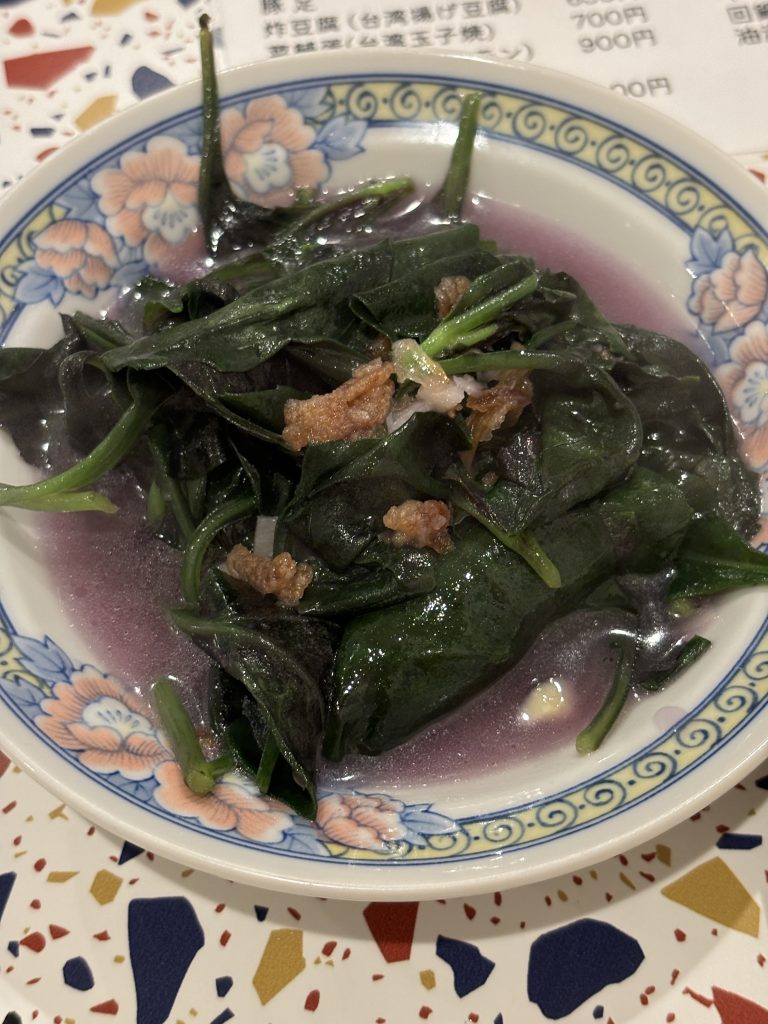
It was bathed in a salty soup and had little crunchy onions (or garlic) and a delicious oil to help it go down smoothly. The flavoring and spices were in line with everything else I’d had that night: ethnic goodness. What better way to compliment a salty taste than the dessert of the night. On this evening was a 3 part set: mango pudding on the left, a mochi filled sweet sesame dango in the middle, and passion fruit cubes on the right. Again, everything was home made.
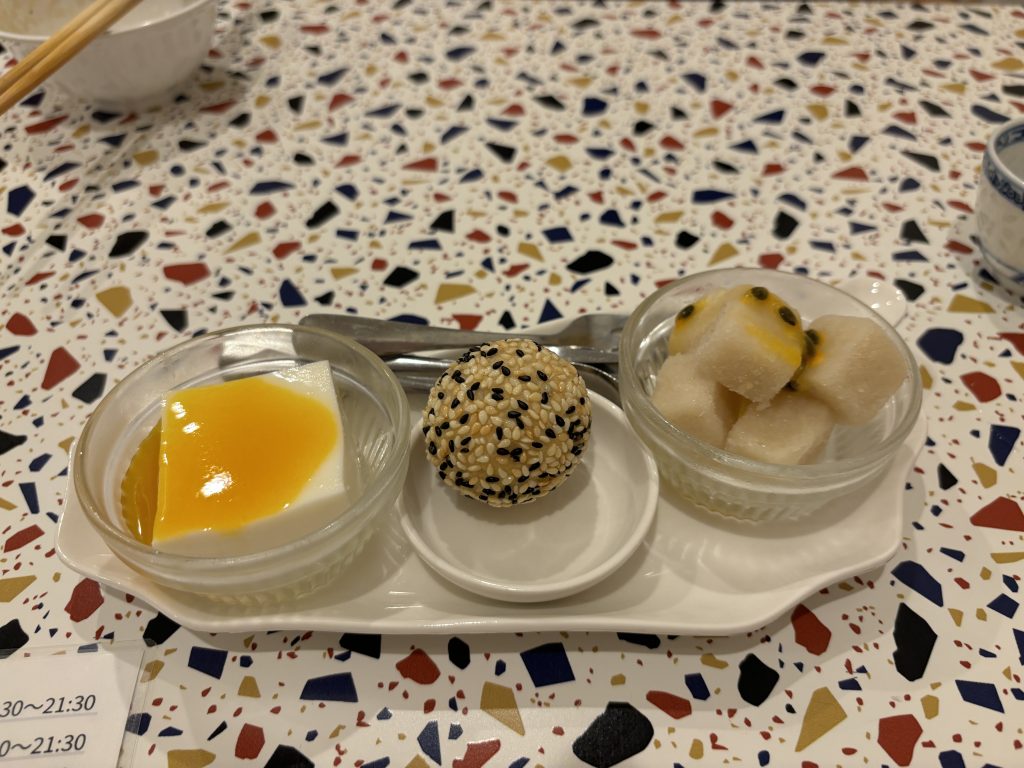
There wasn’t a bad thing in the bunch. On the left you can see the hot and gooey mochi mixed with the sweet sesame paste and coasted with a crunchy exterior for the sesame dango (heaven!) It was complimented by the cold and refreshing passion fruit ice cream on the right.
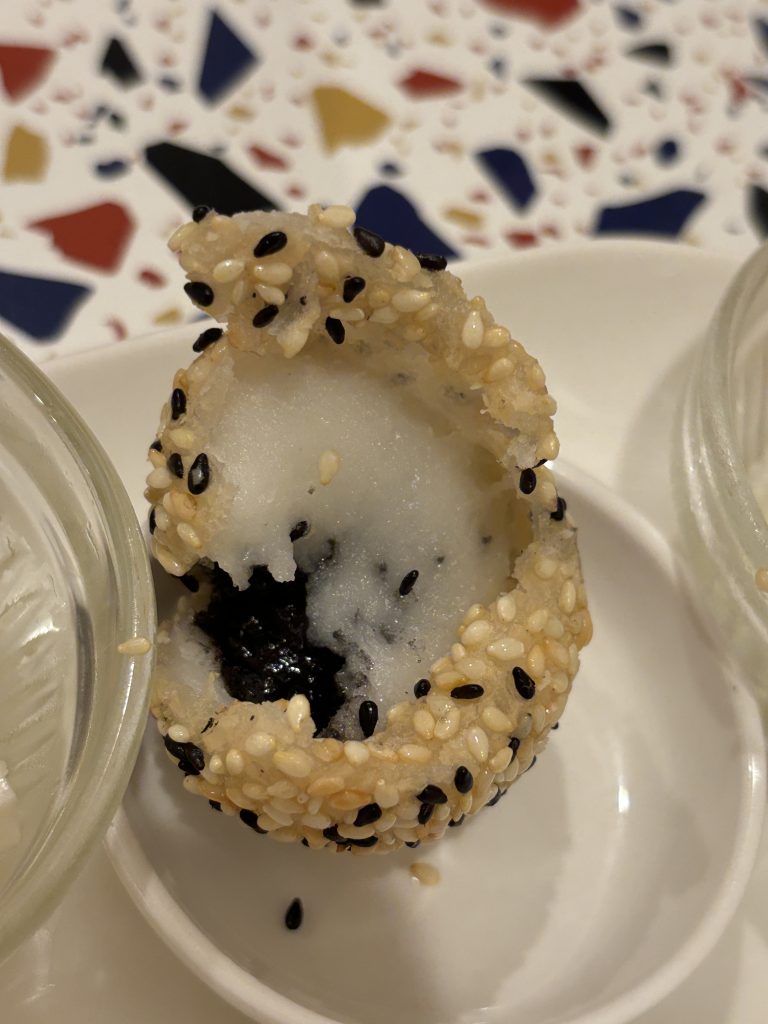
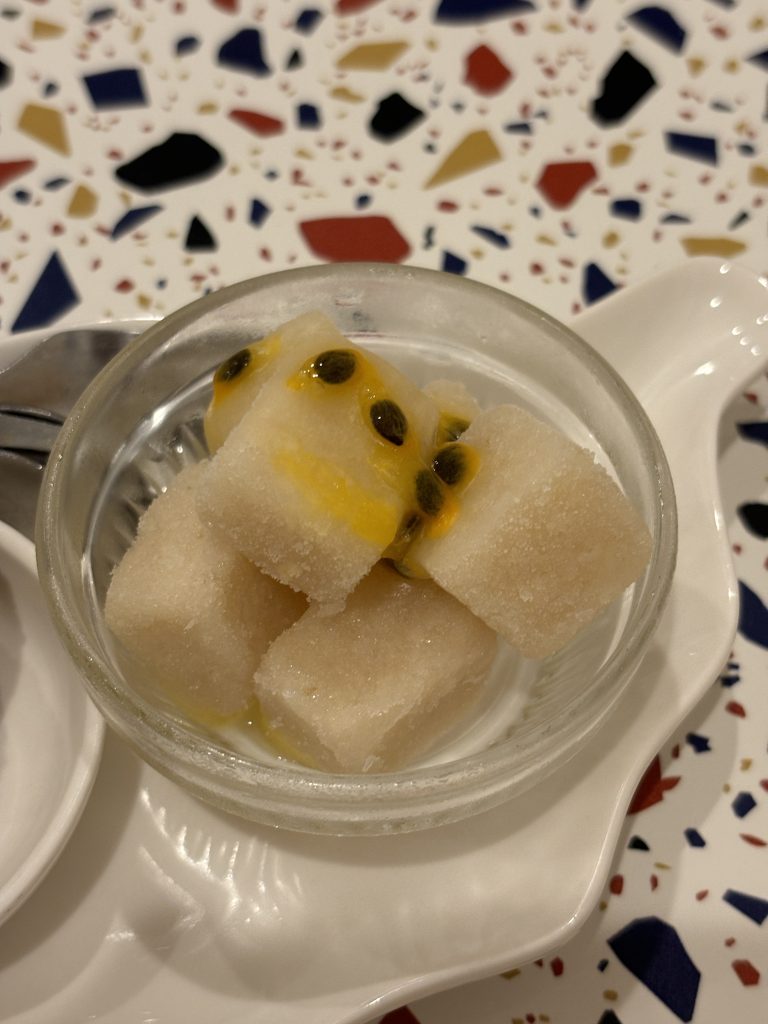
I wanted to go back again immediately as I left the restaurant. The chi-pan chicken crunchy spices were embedded in my memory and were howling at me to come back like Sirens of the sea. I would just have to wait until next time!
Would you believe me if I told you that I went to all these restaurants in a single day? That’s what I mean when I say I sacrifice my stomach for my art. I’m just kidding of course, but stay tuned for next edition of “The 5 Best (fill in the blank) in Osaka,” it’s been a pleasure!






















Your post made me very hungry! You seem to have perfect recall of everything you eat, with a terrific understanding of what’s in it, what it’s called, etc. You must have a cast-iron stomach to have consumed so much in a day though! It’s also a delightful read full of funny asides. Well done, Sam!